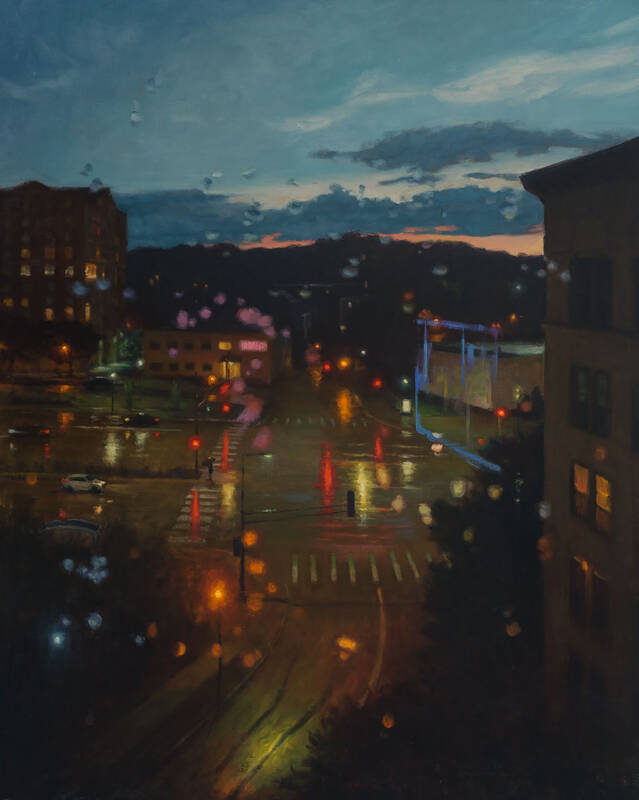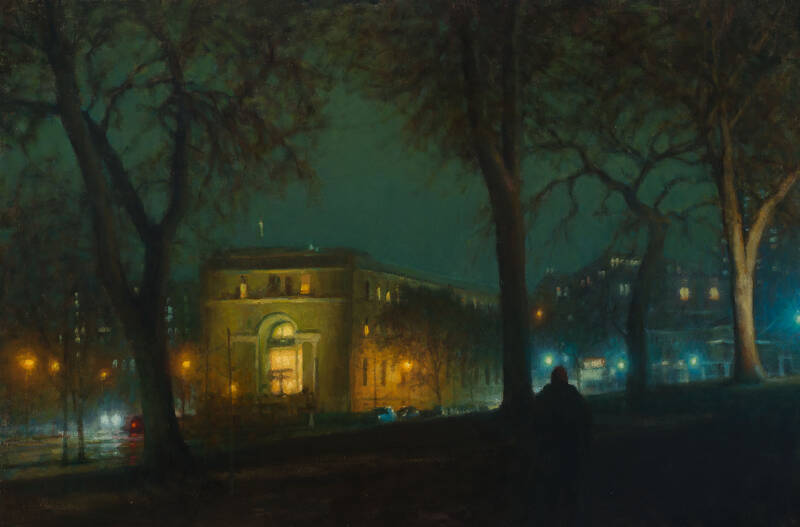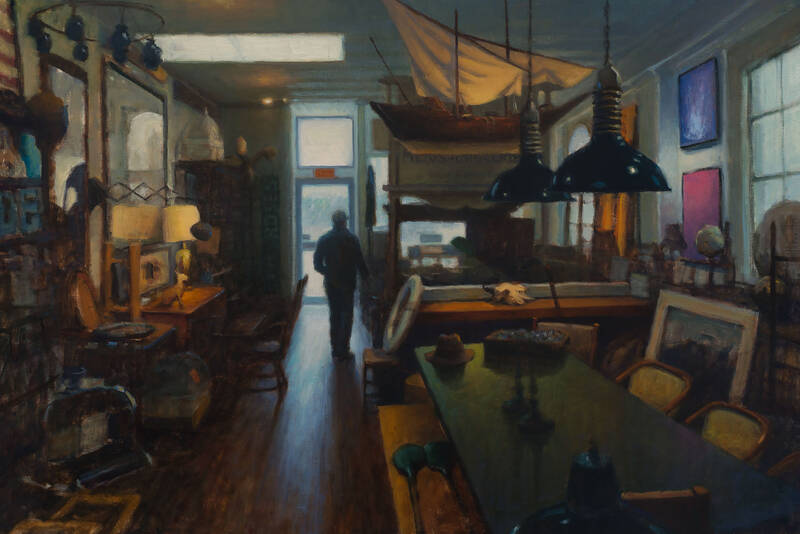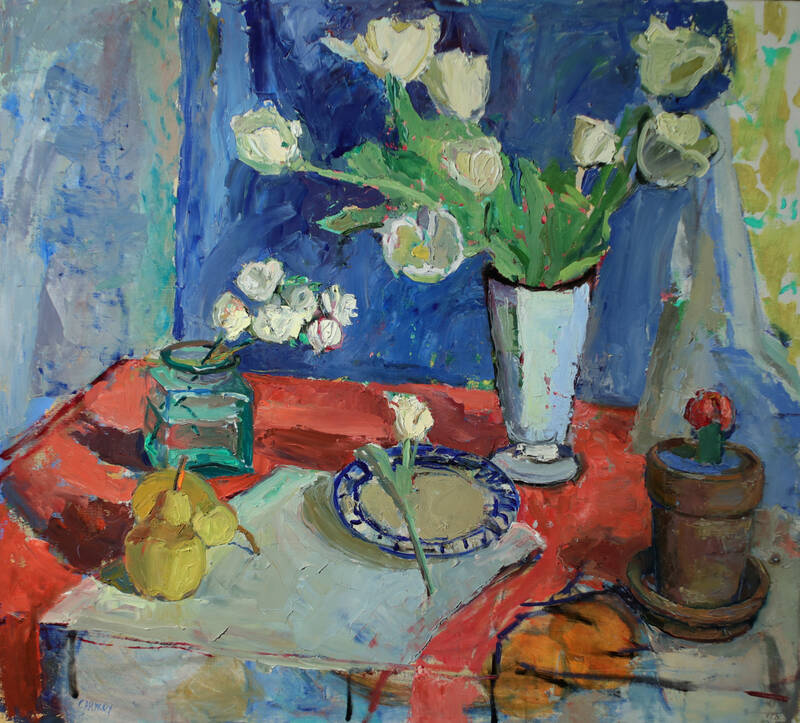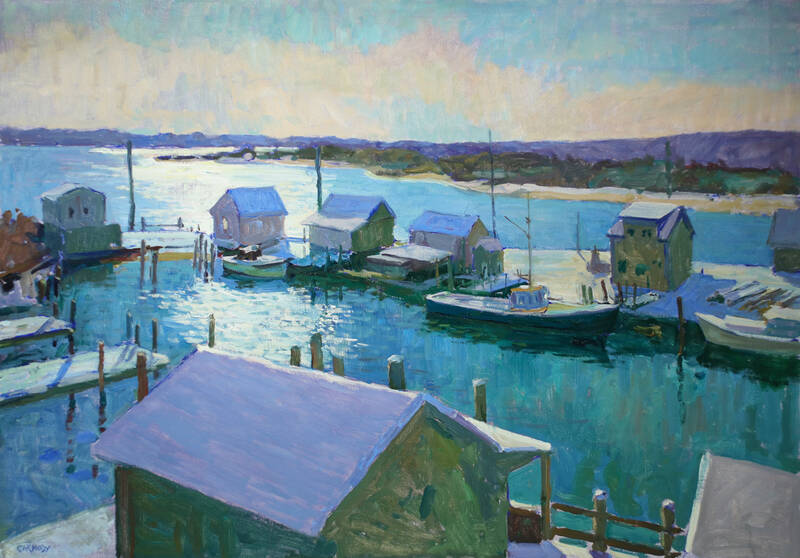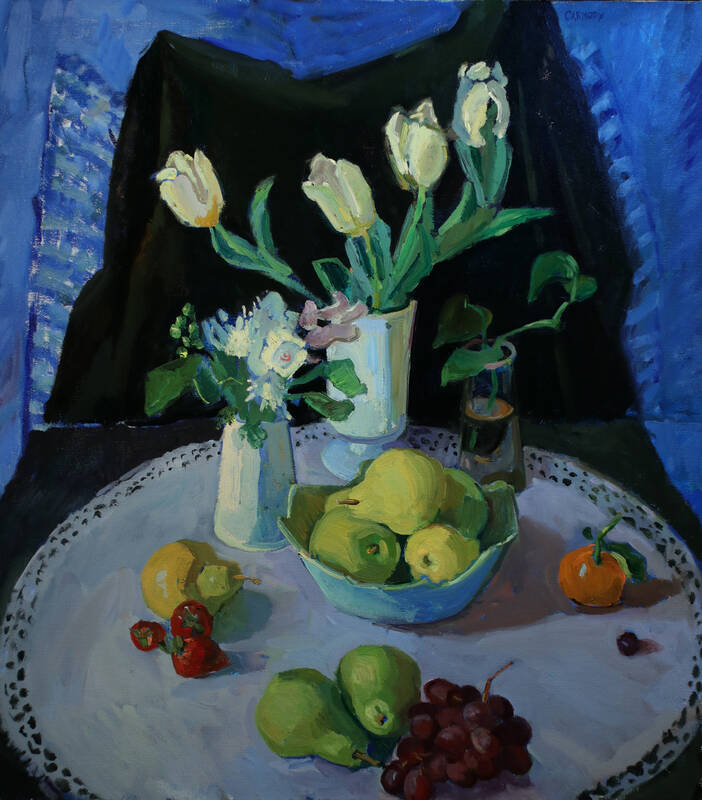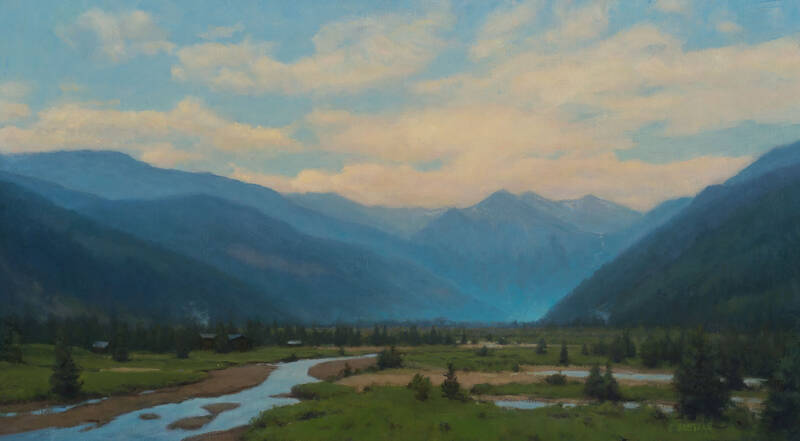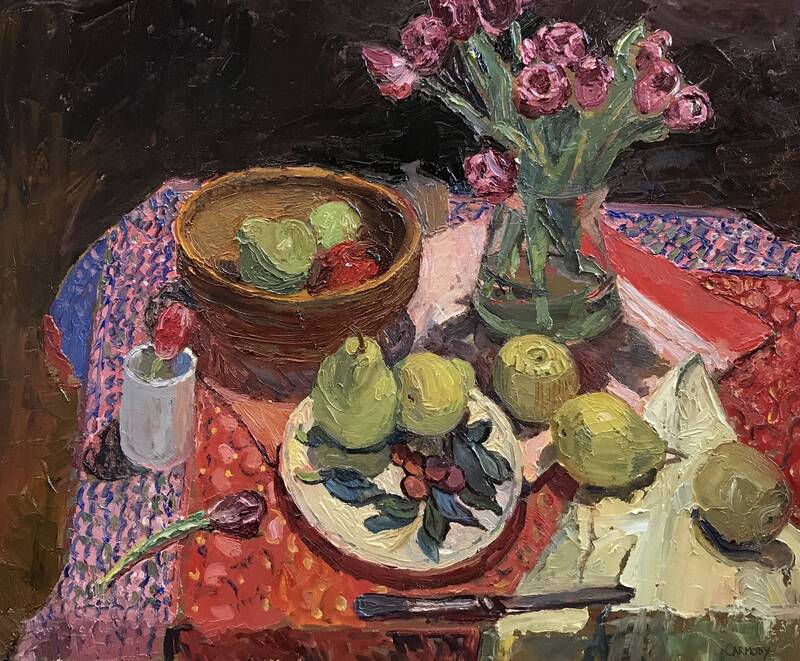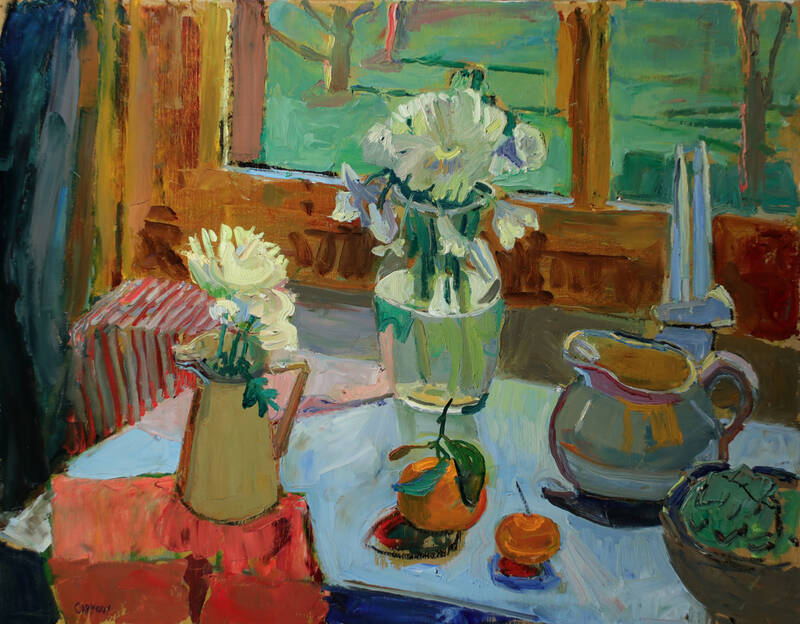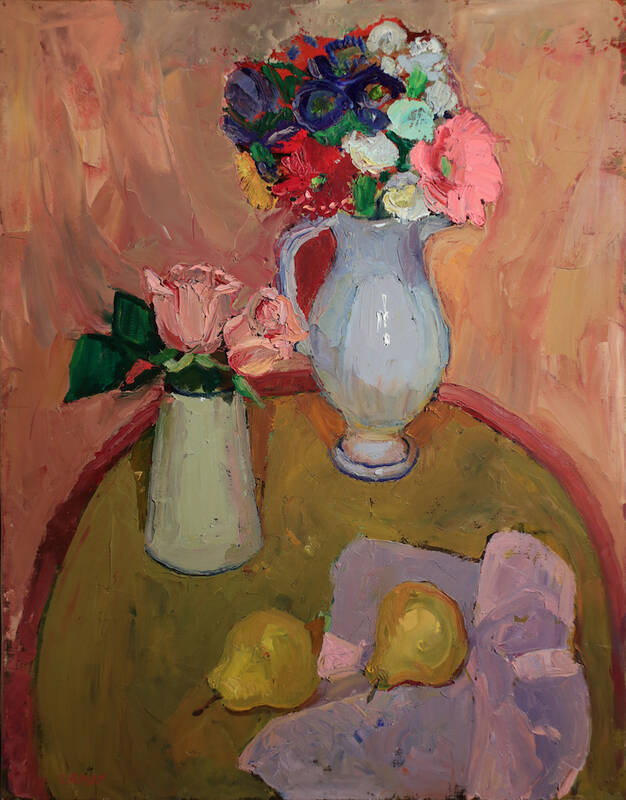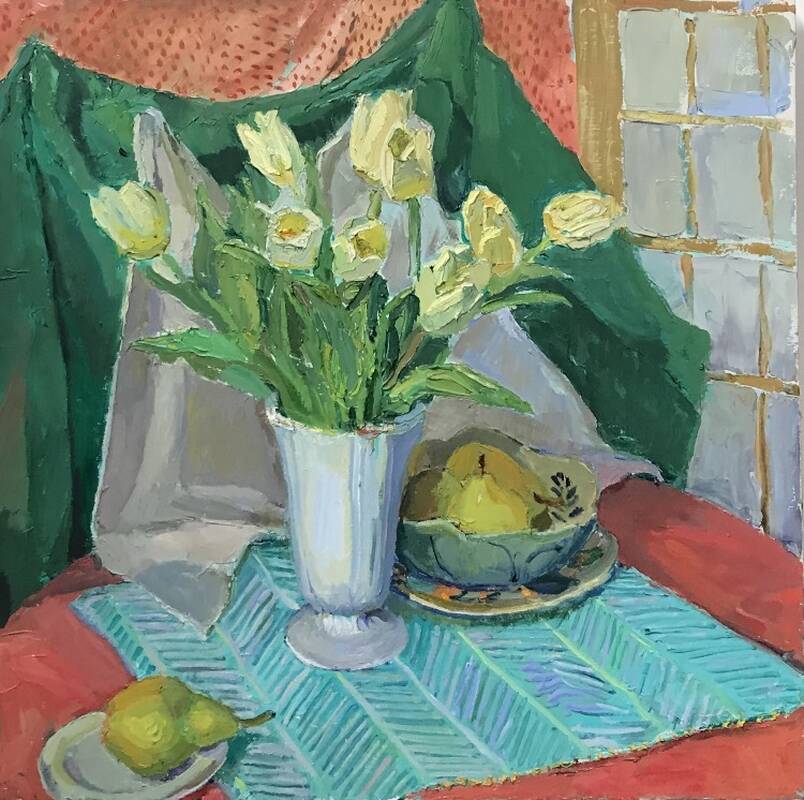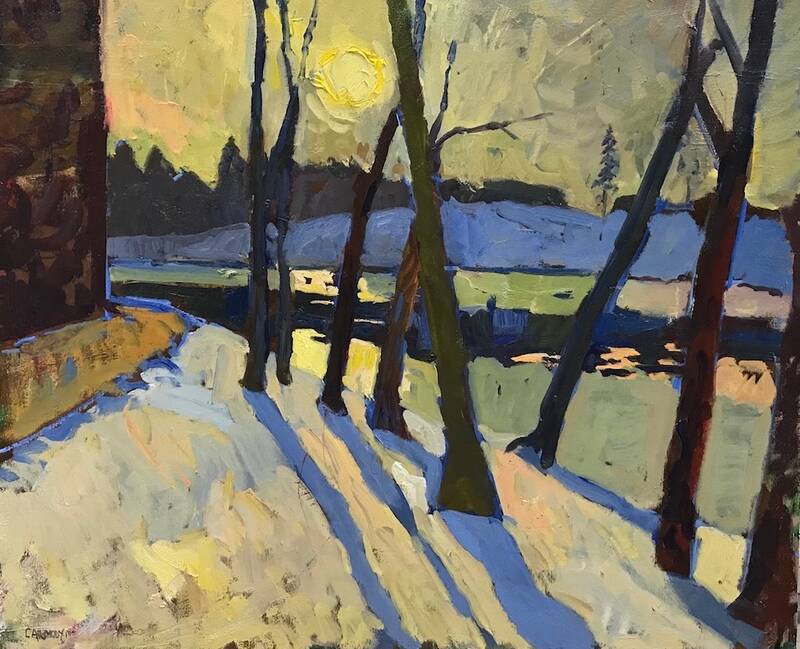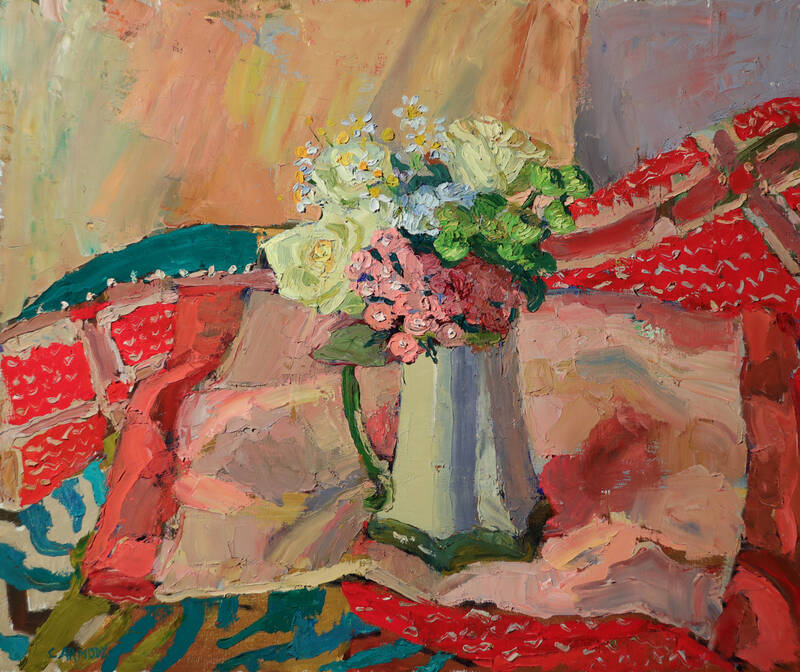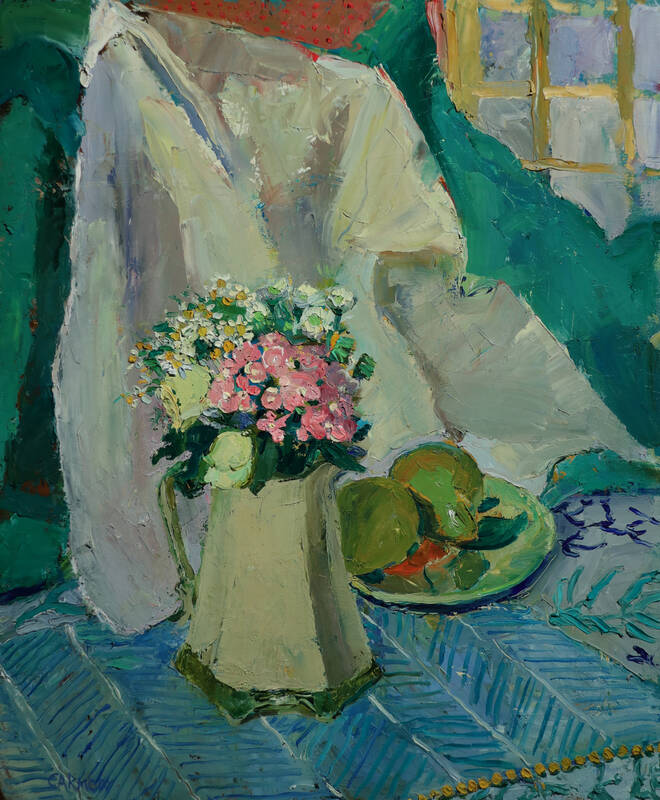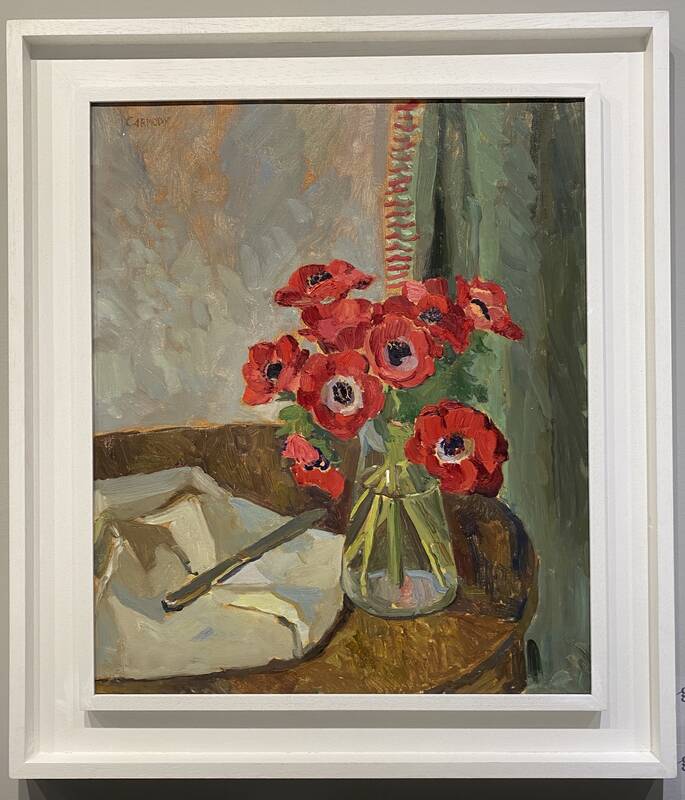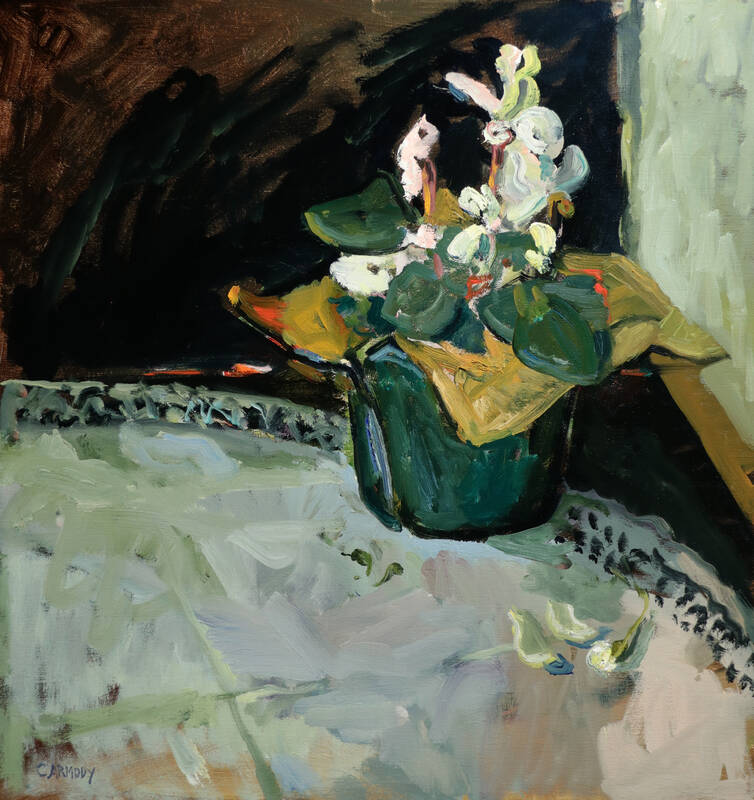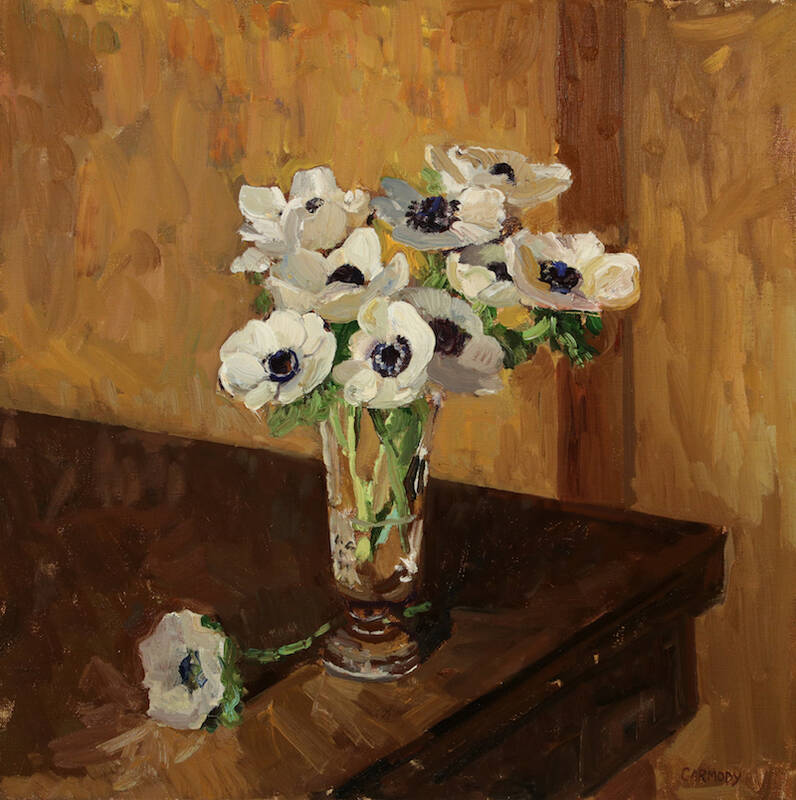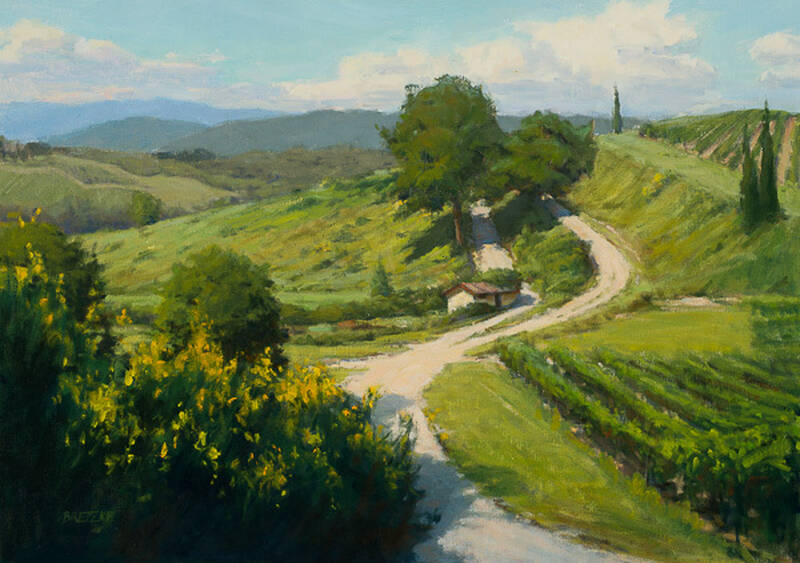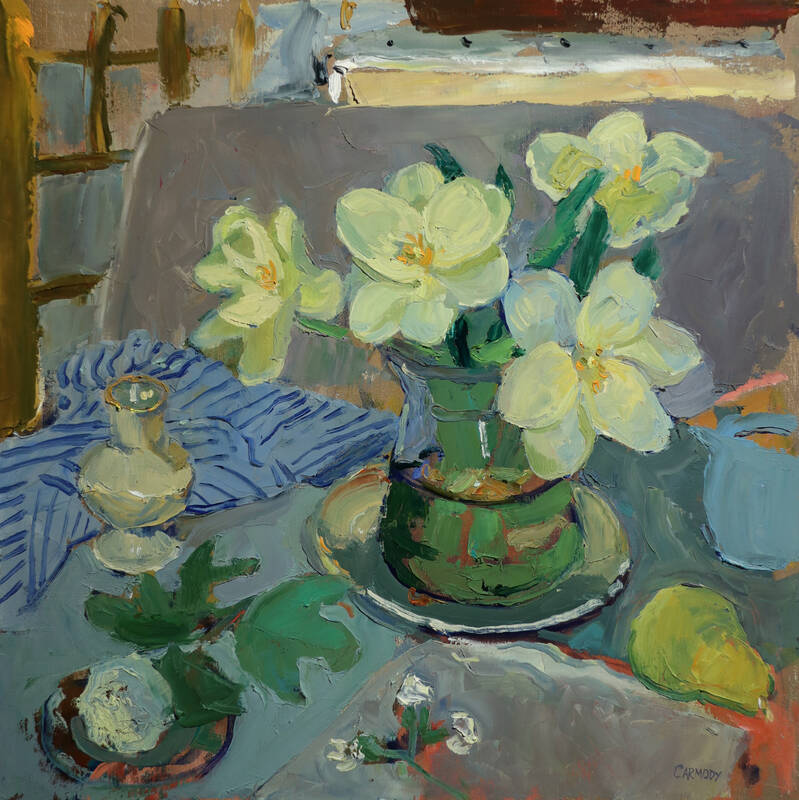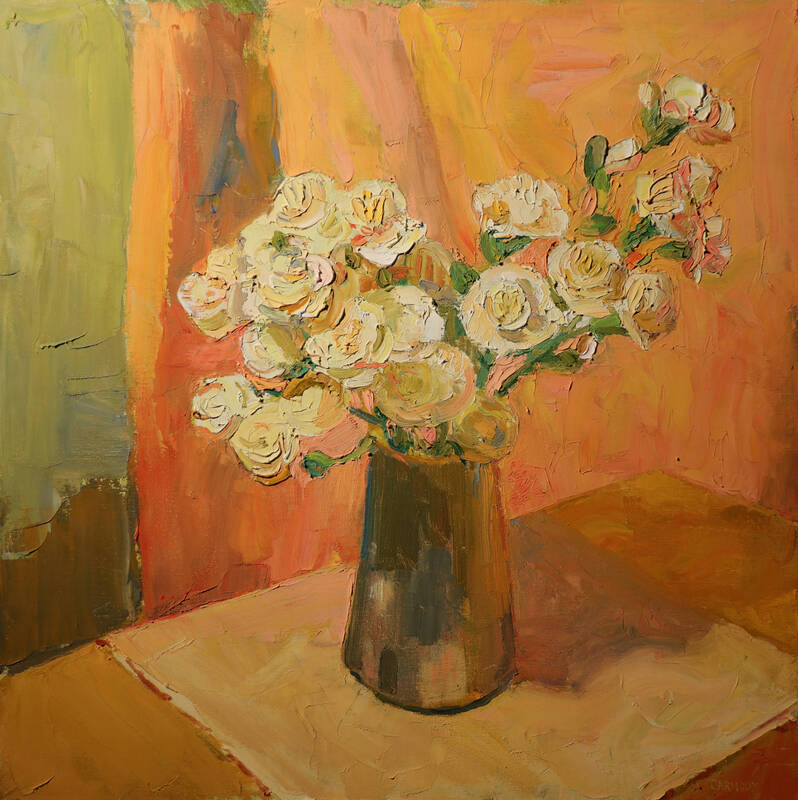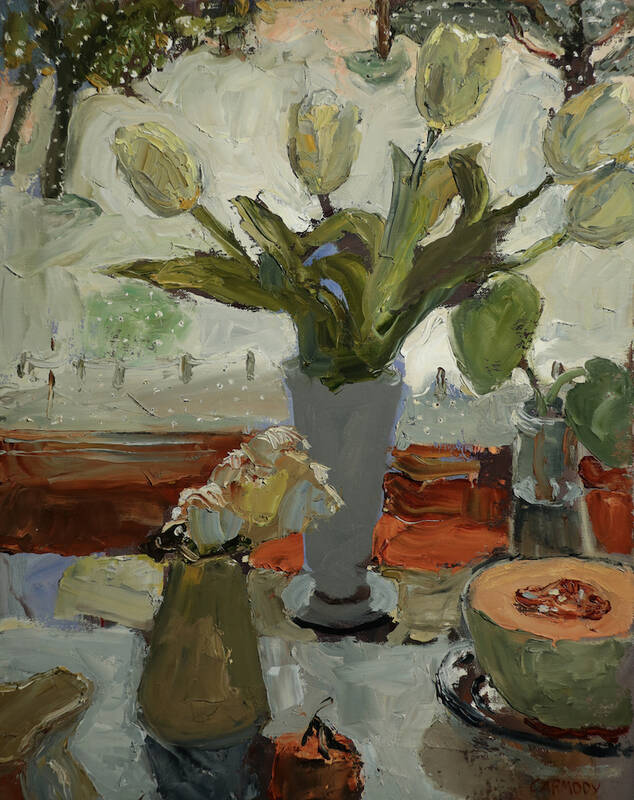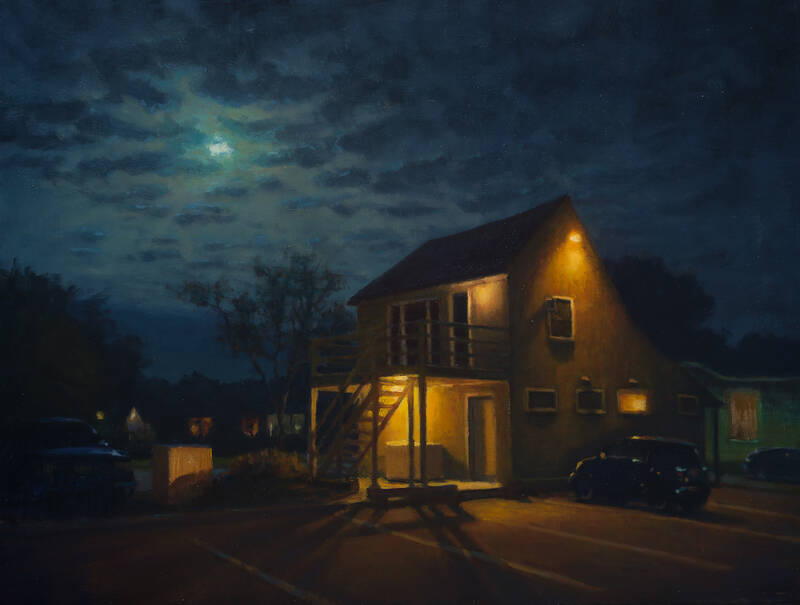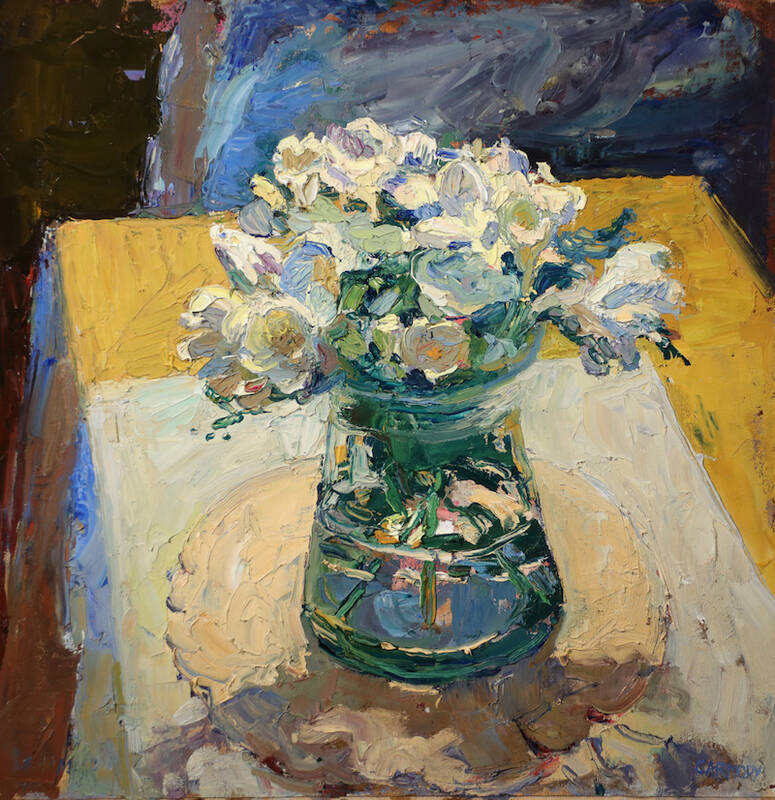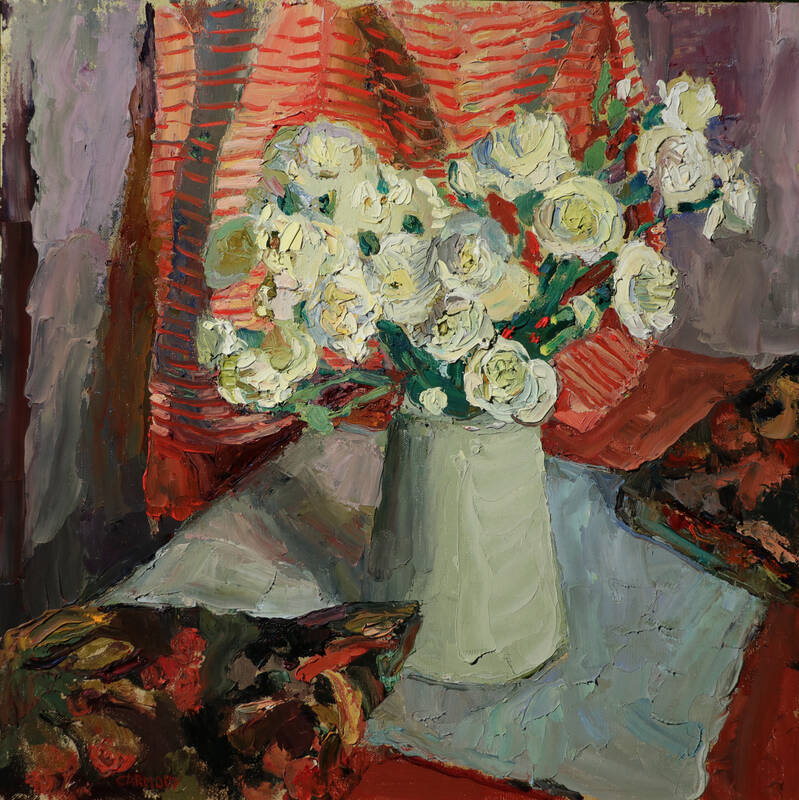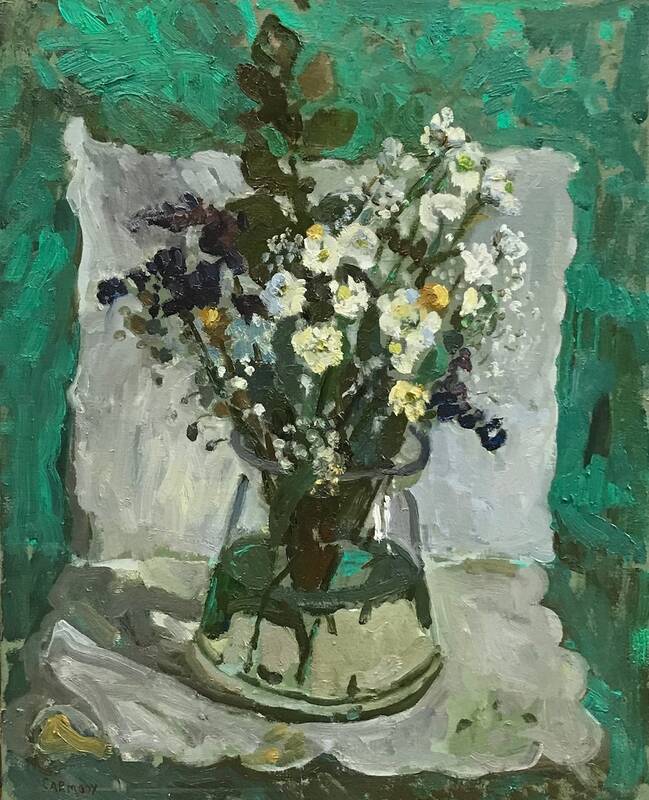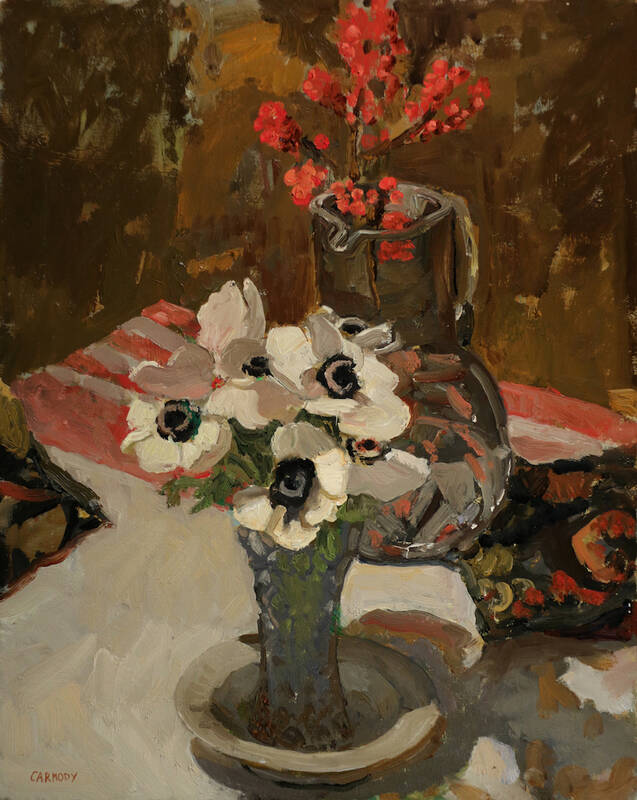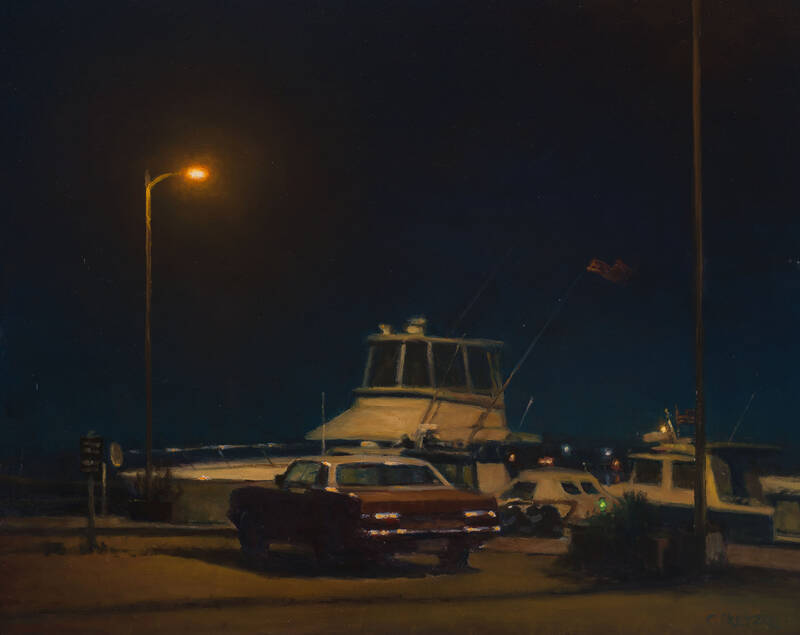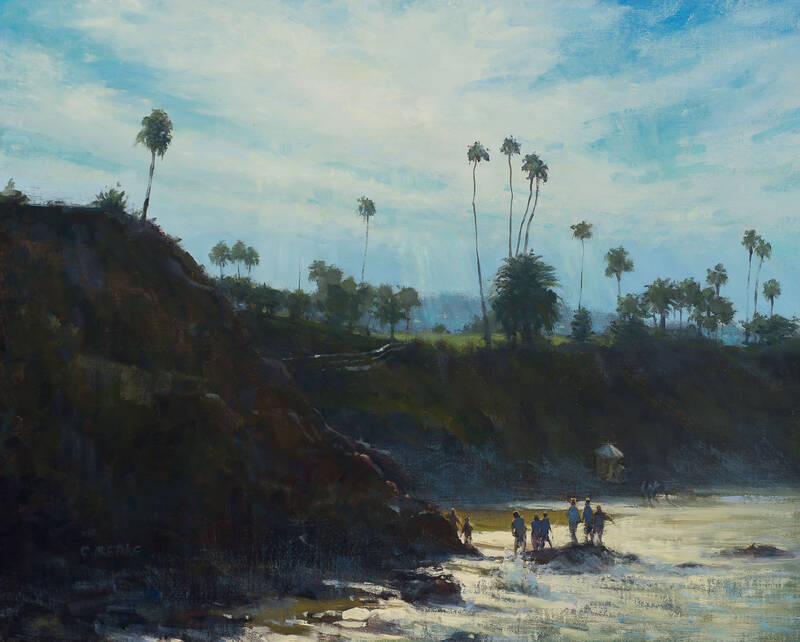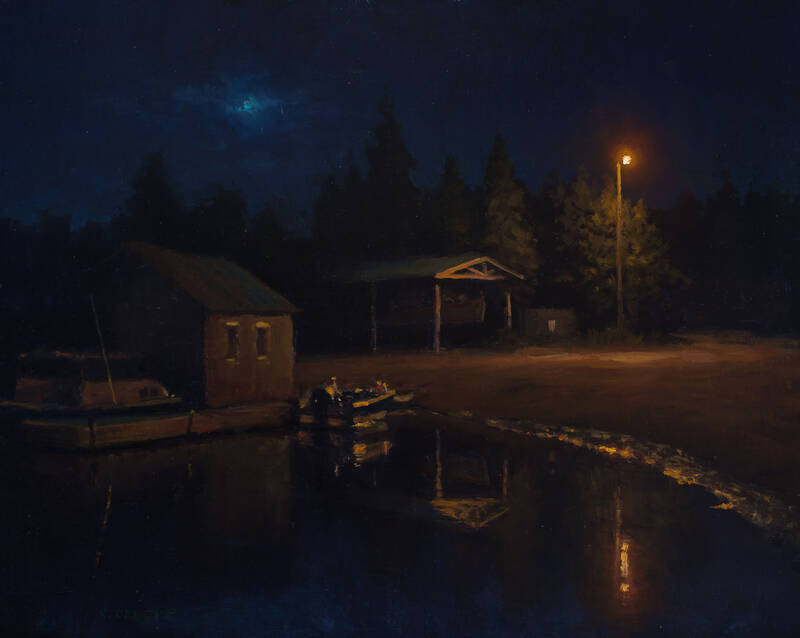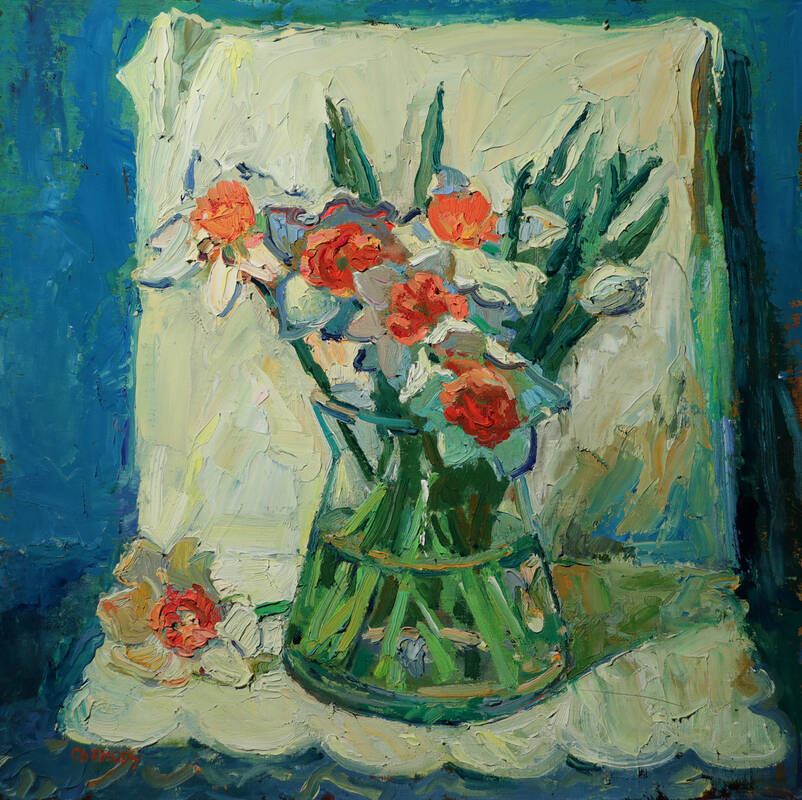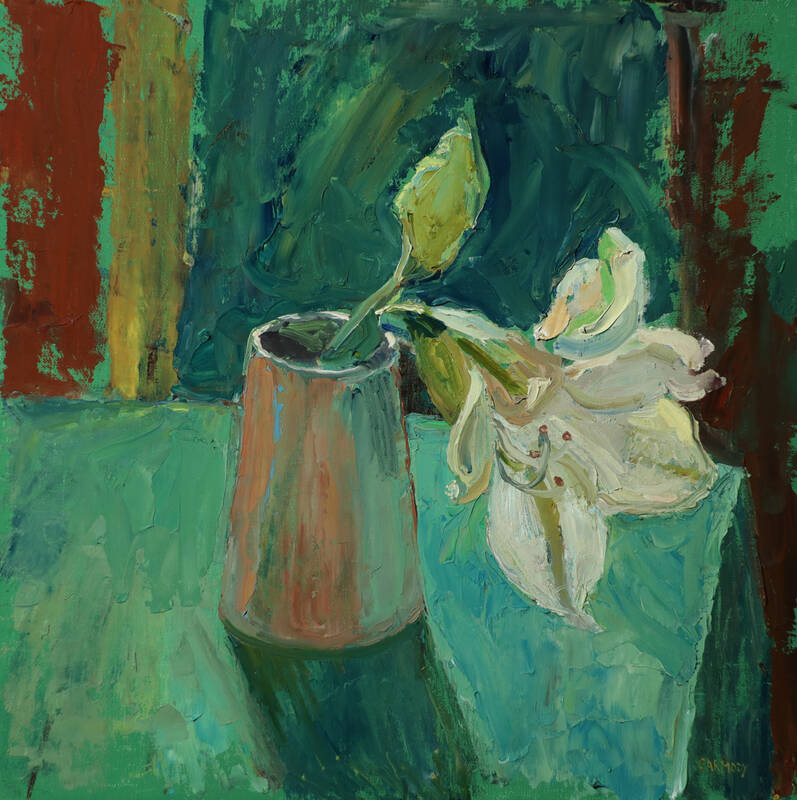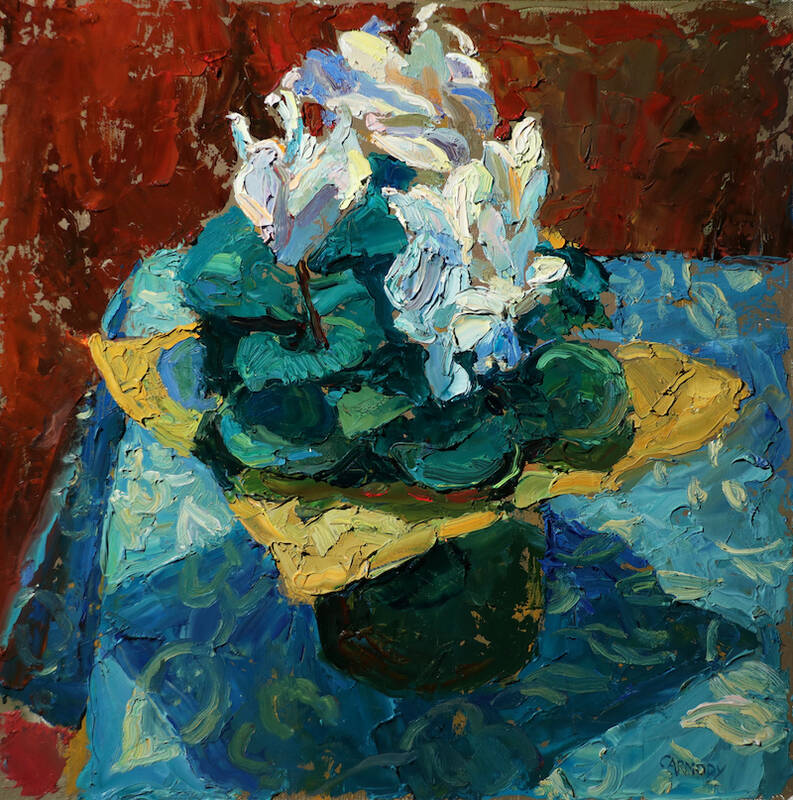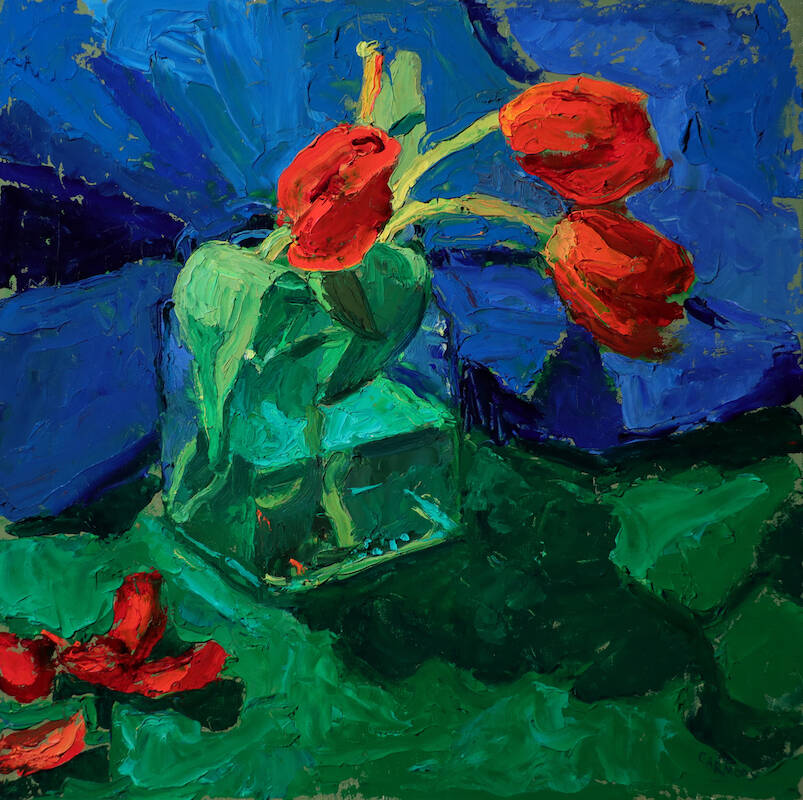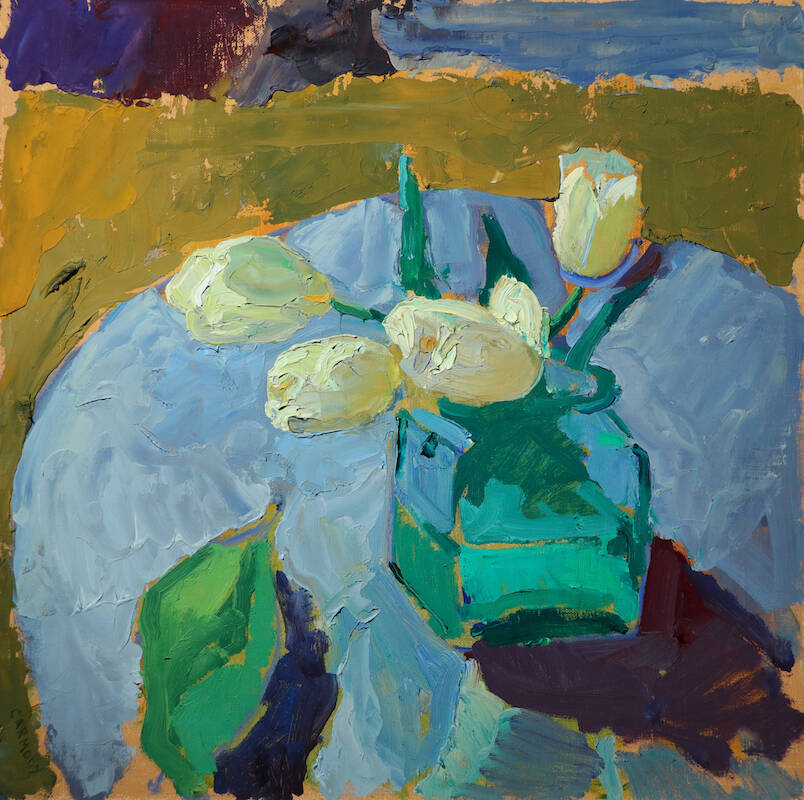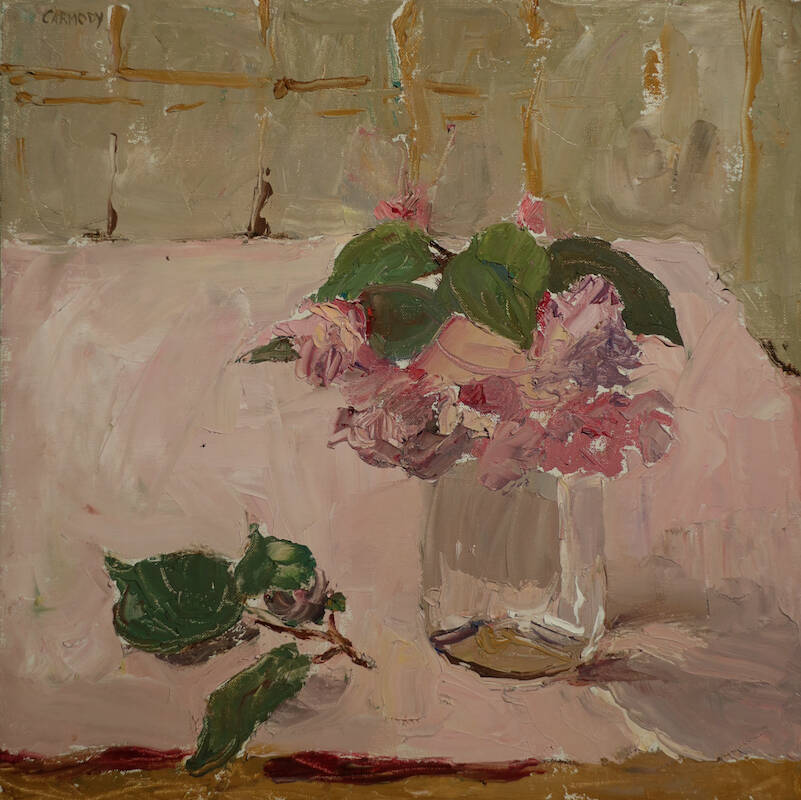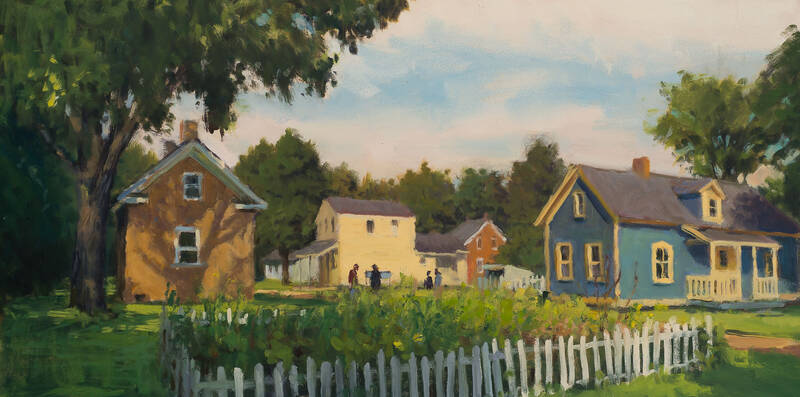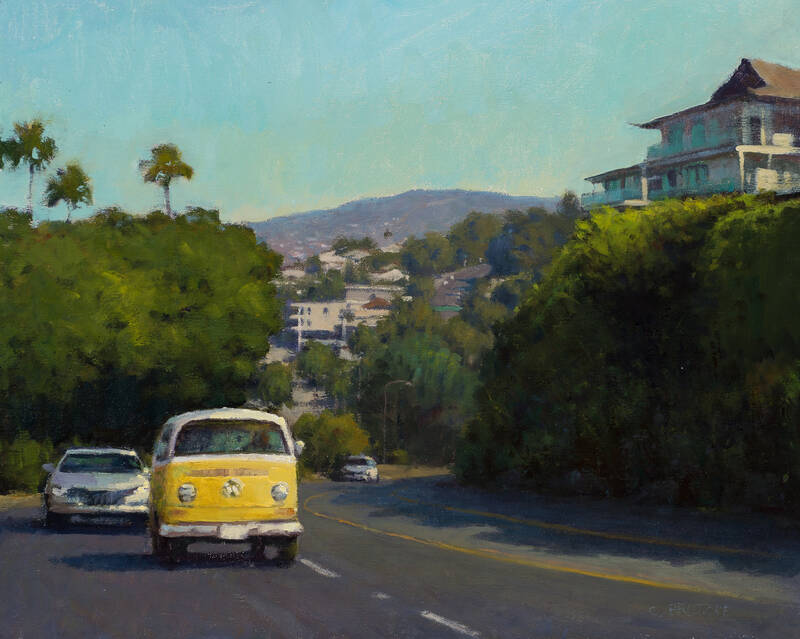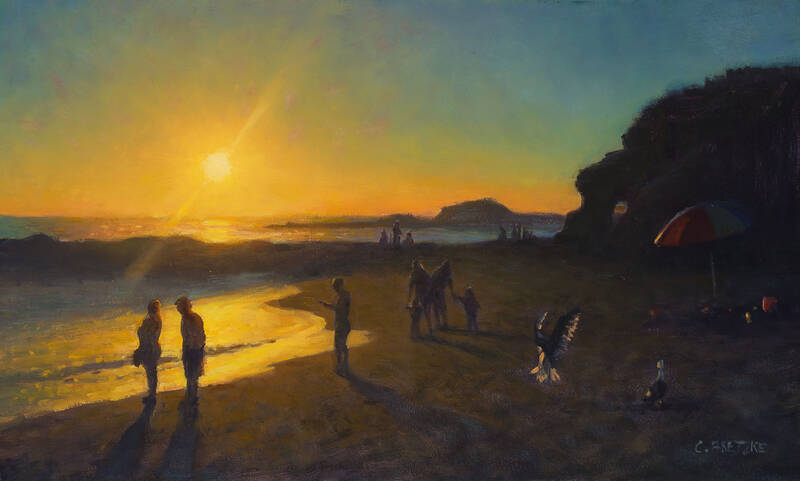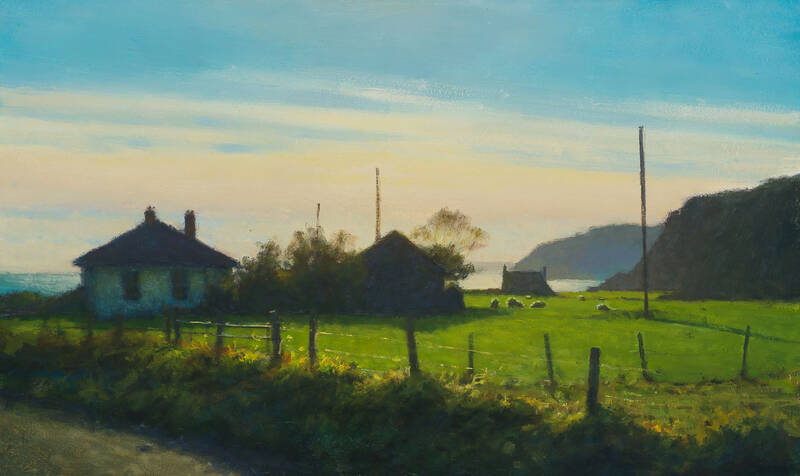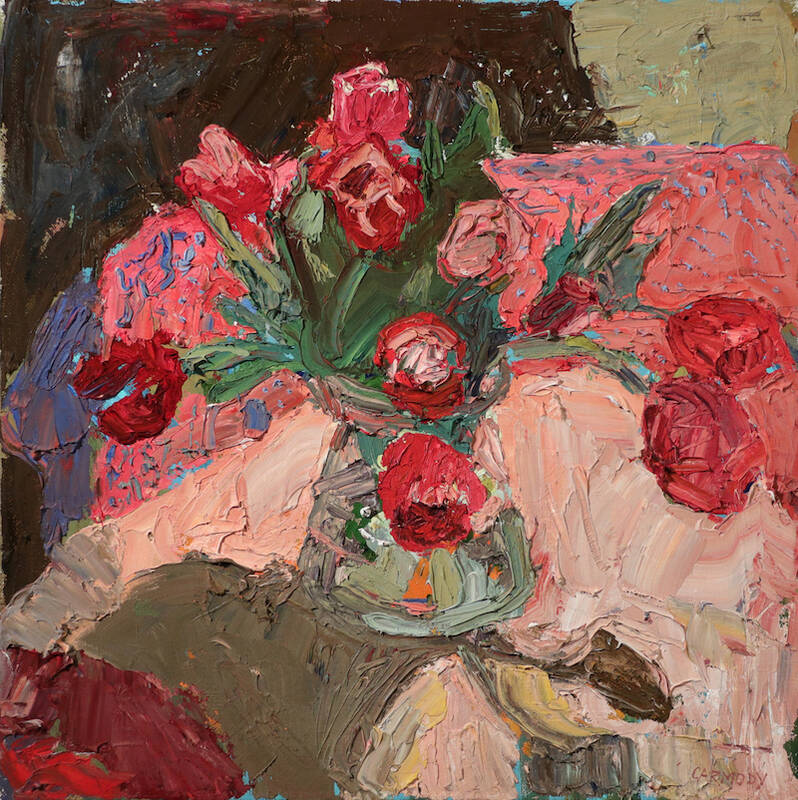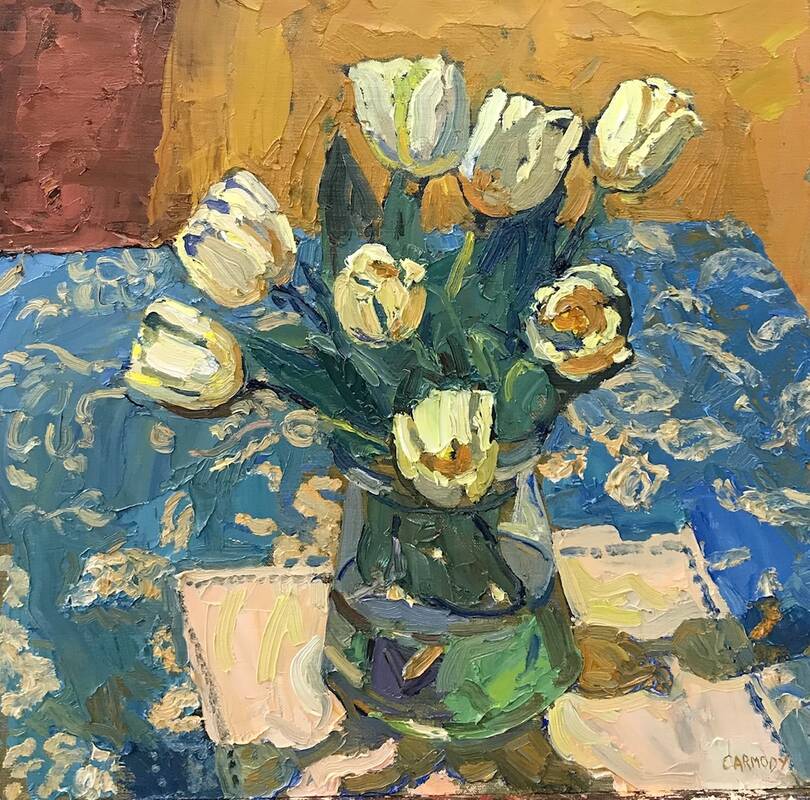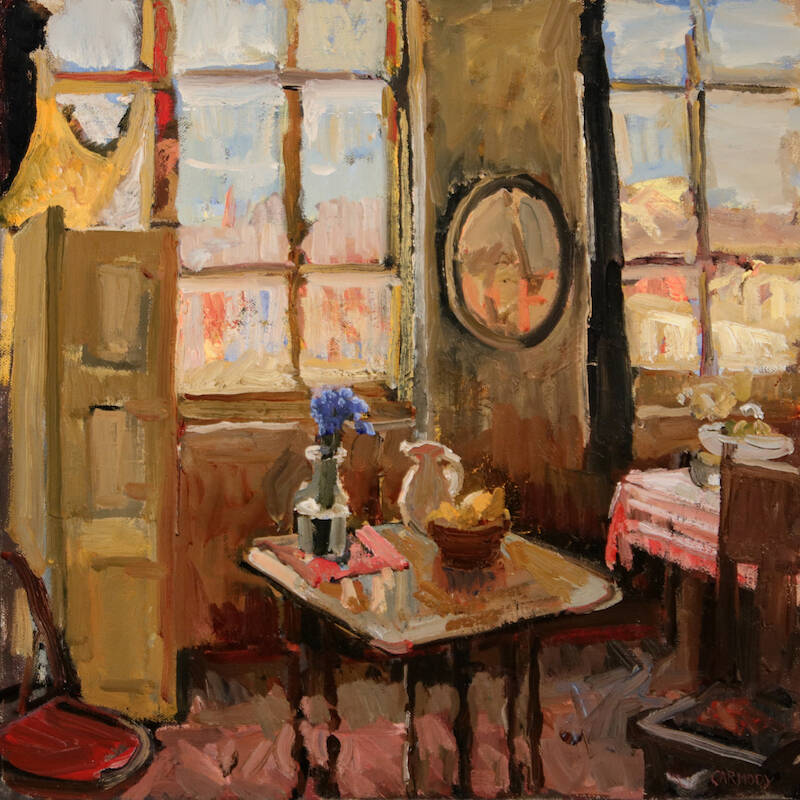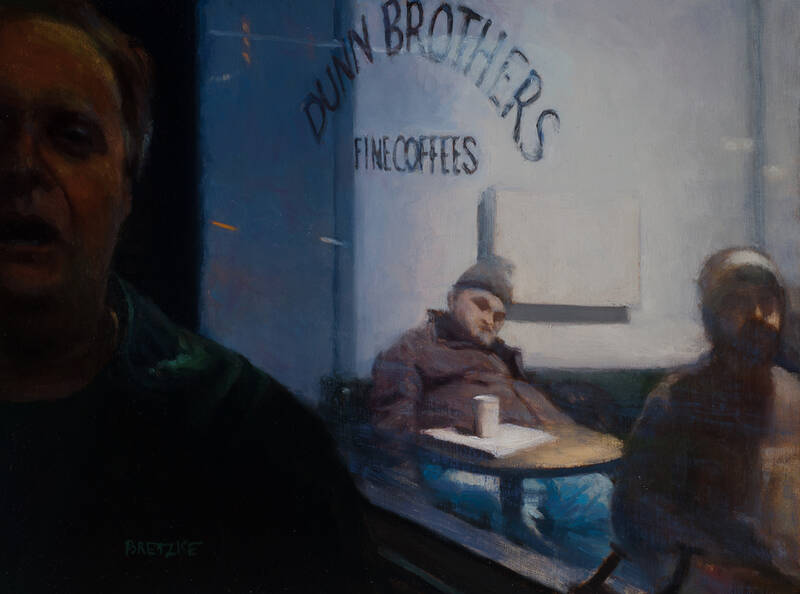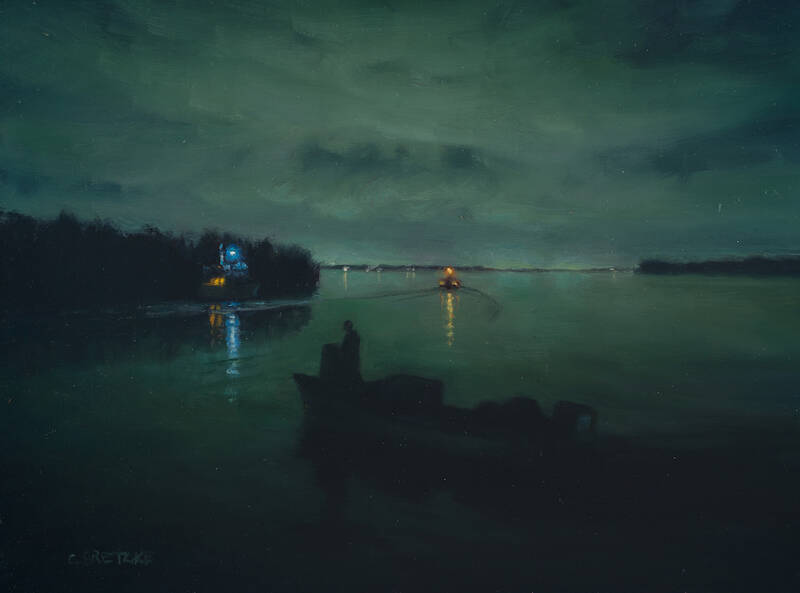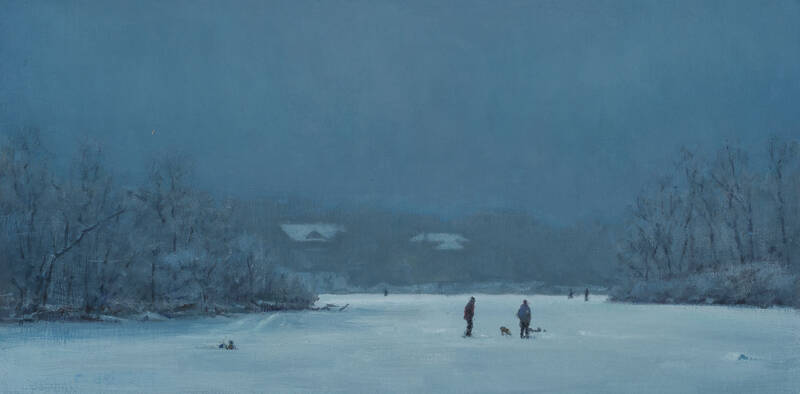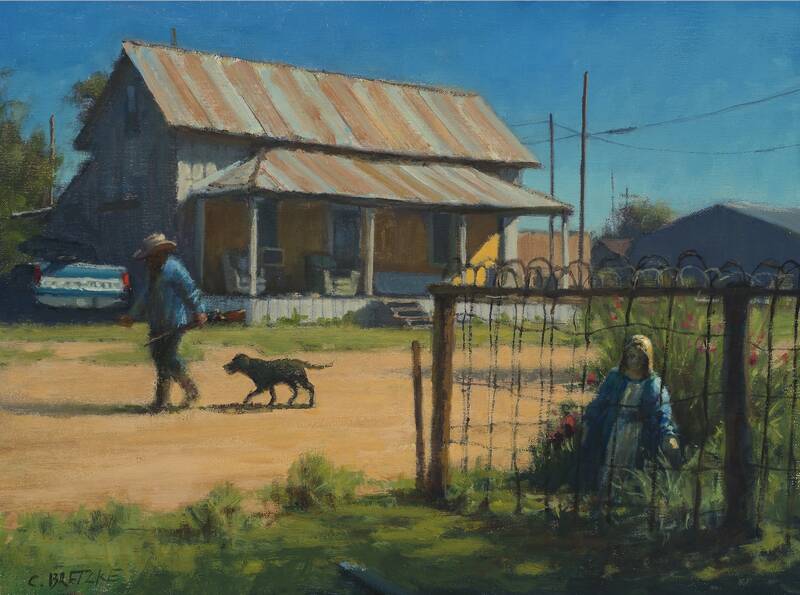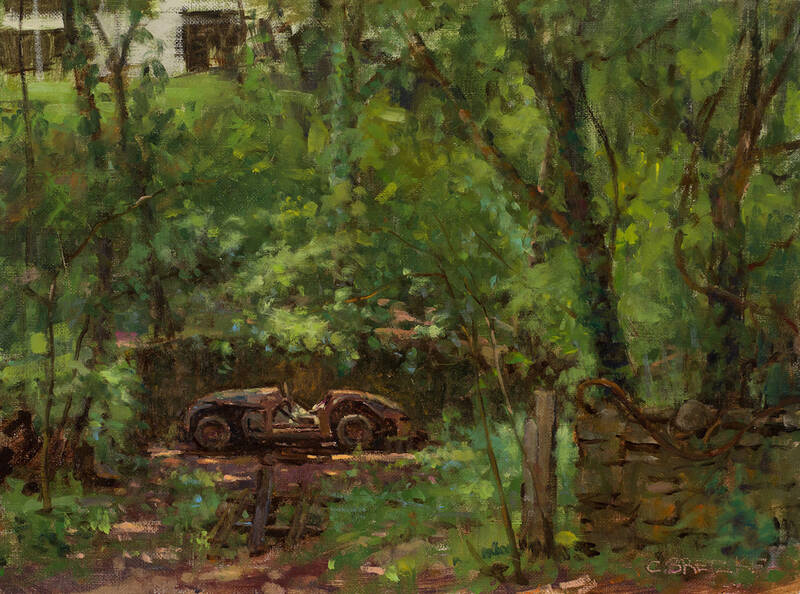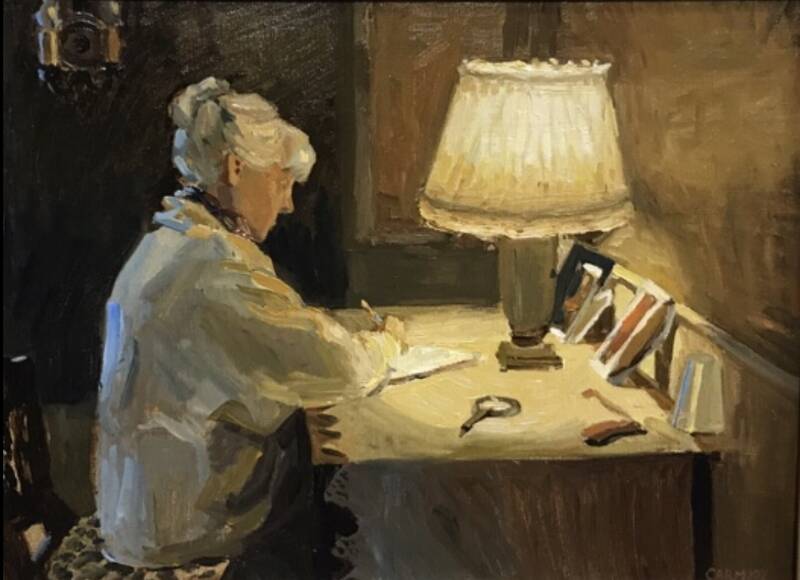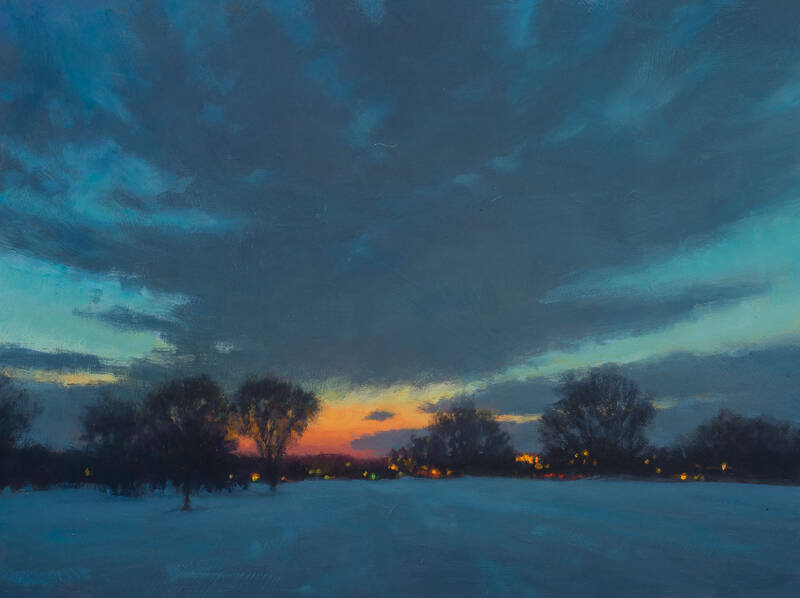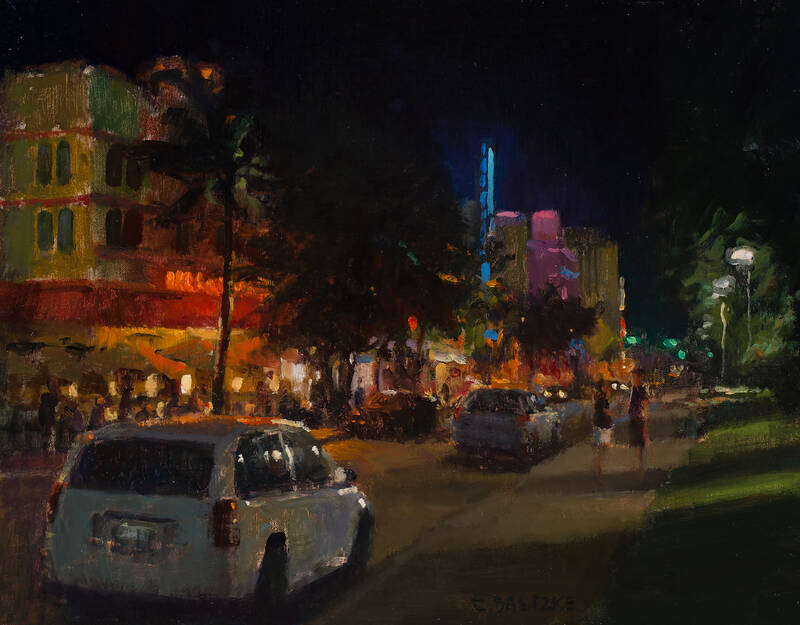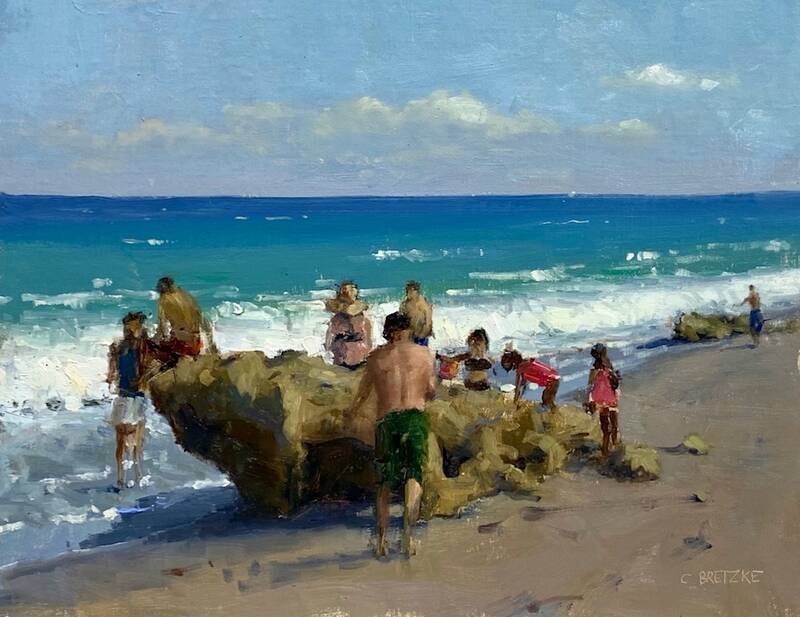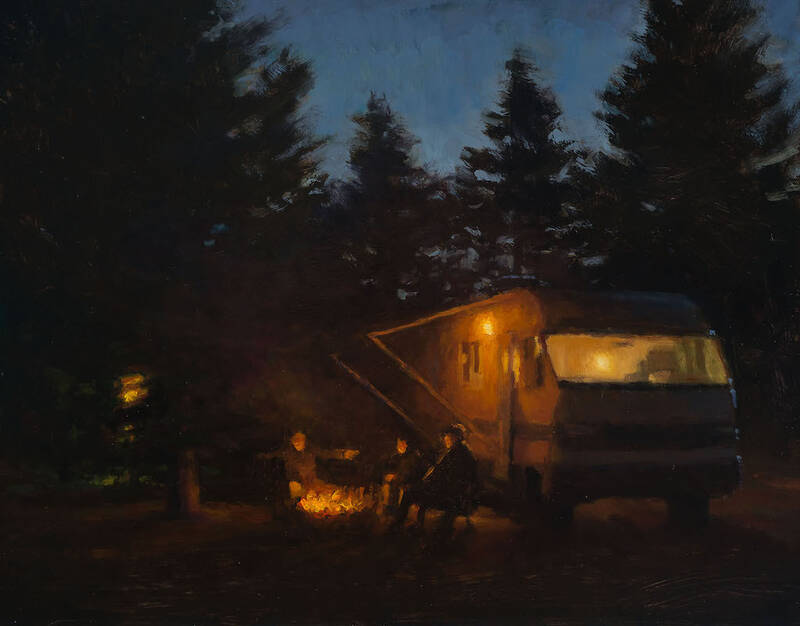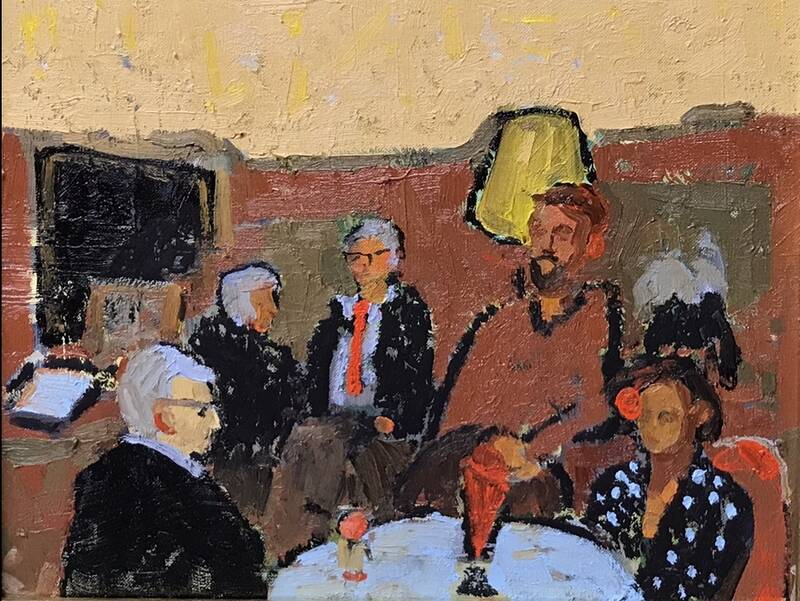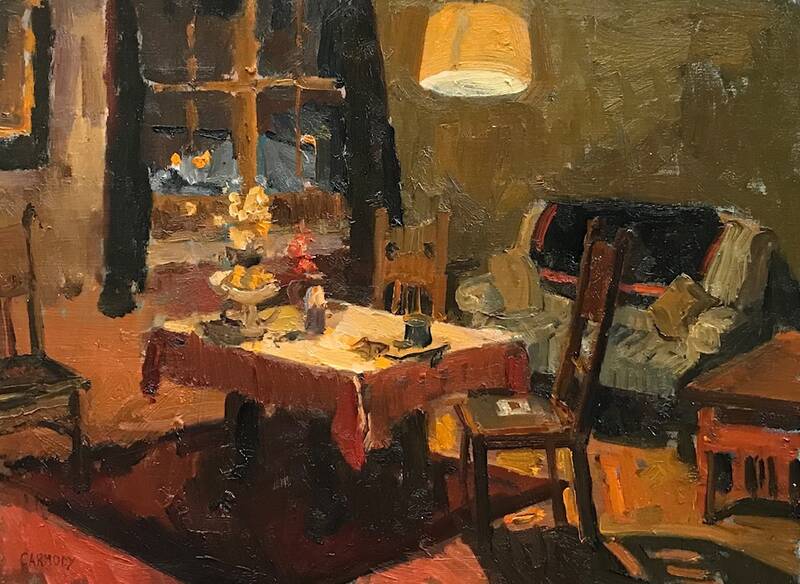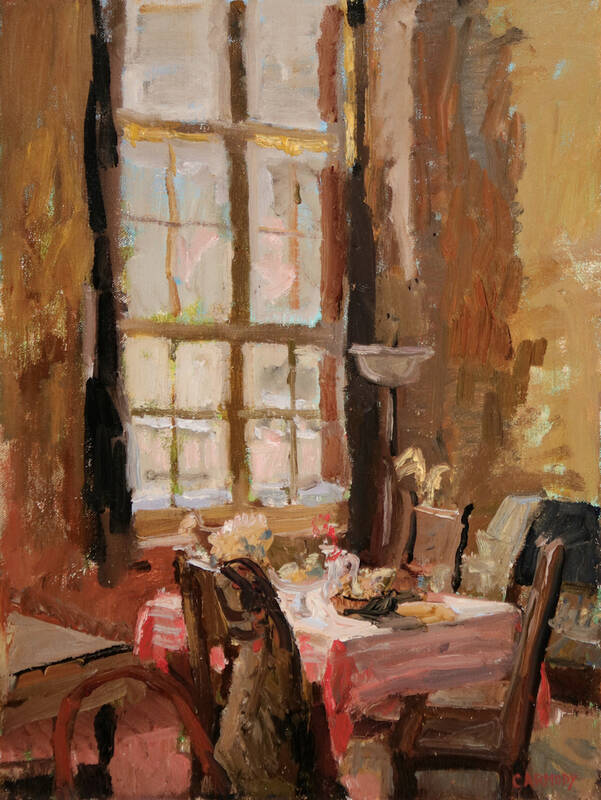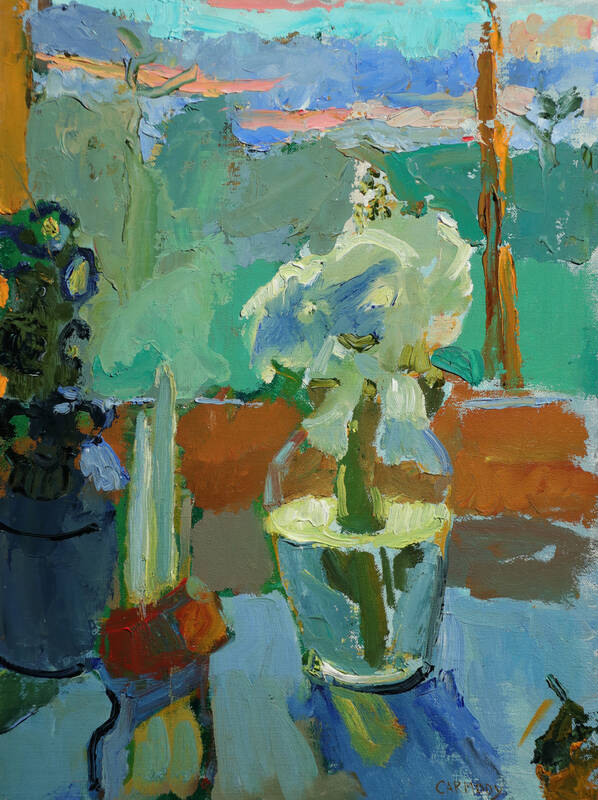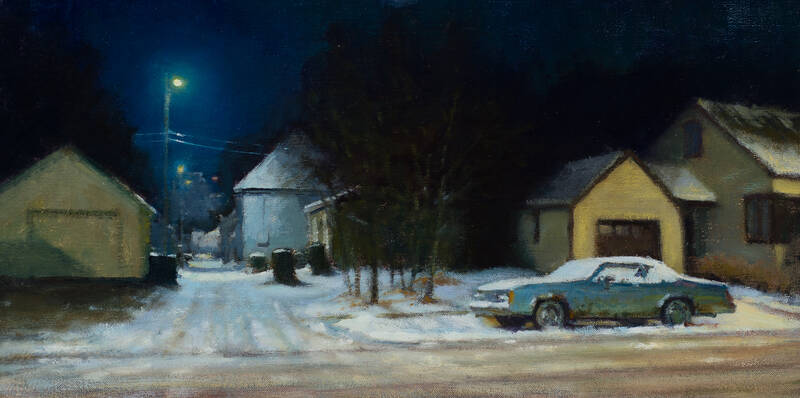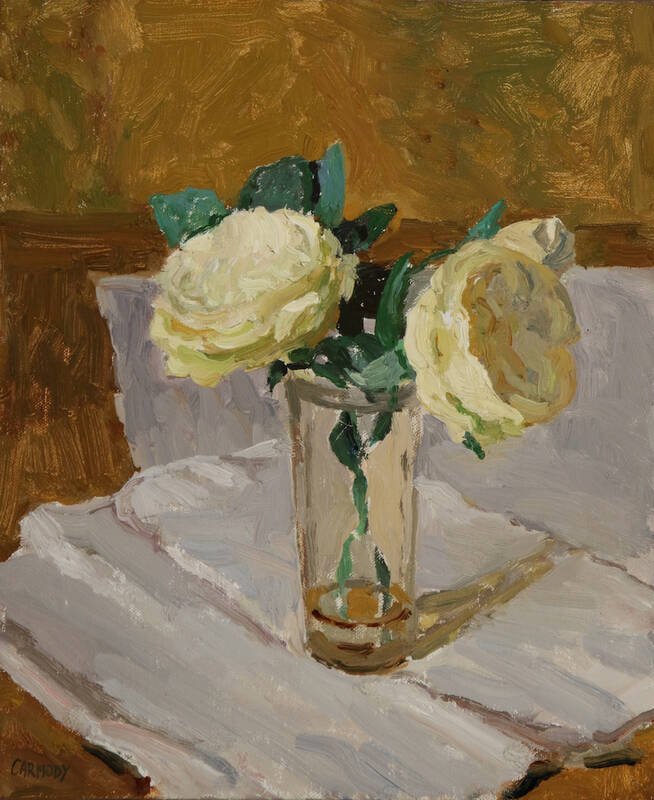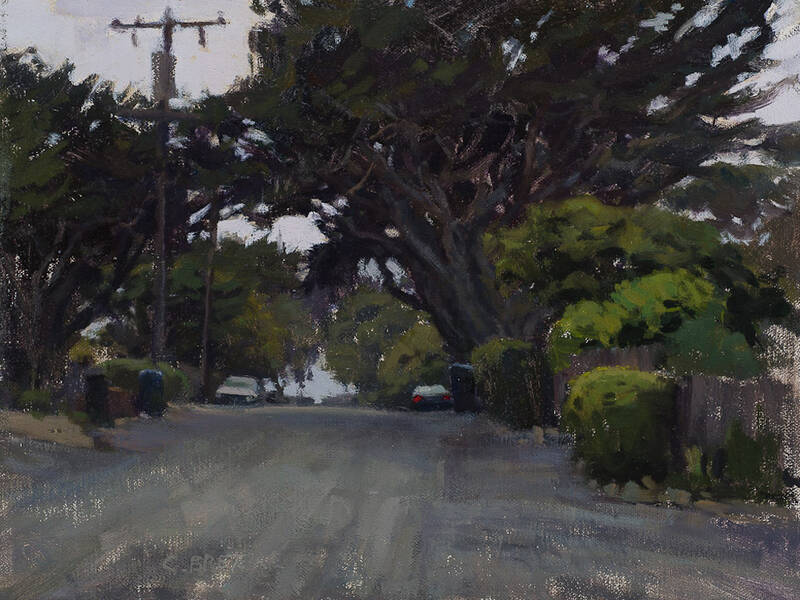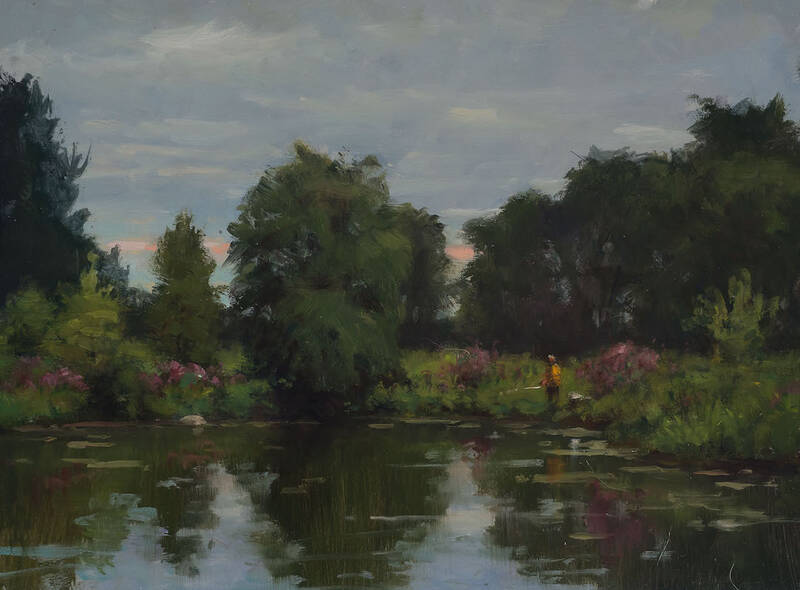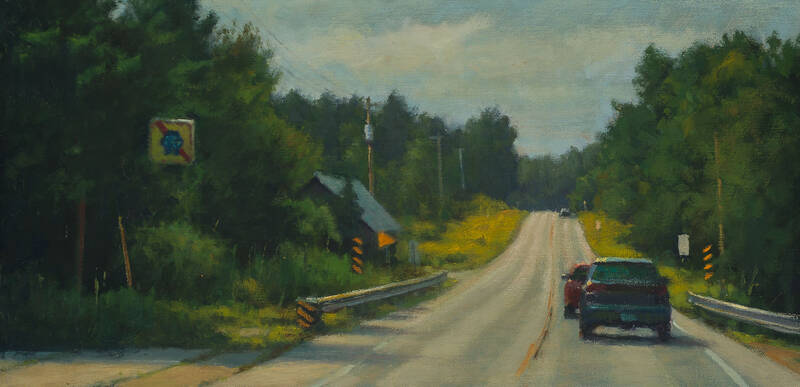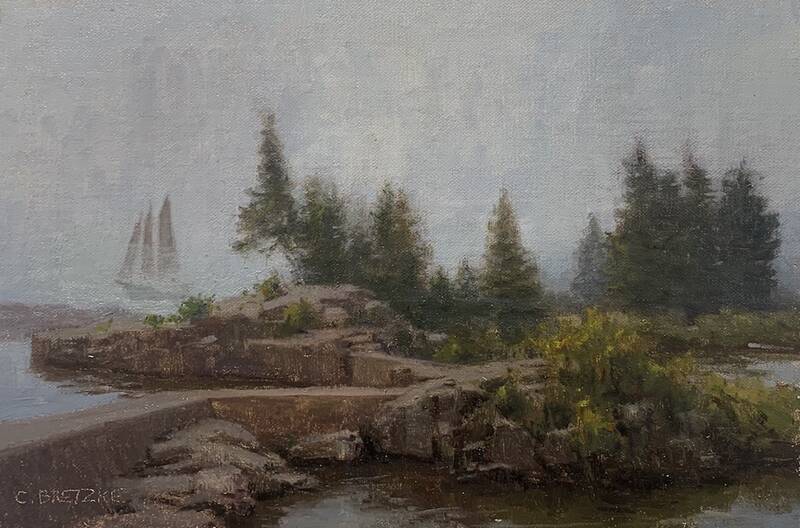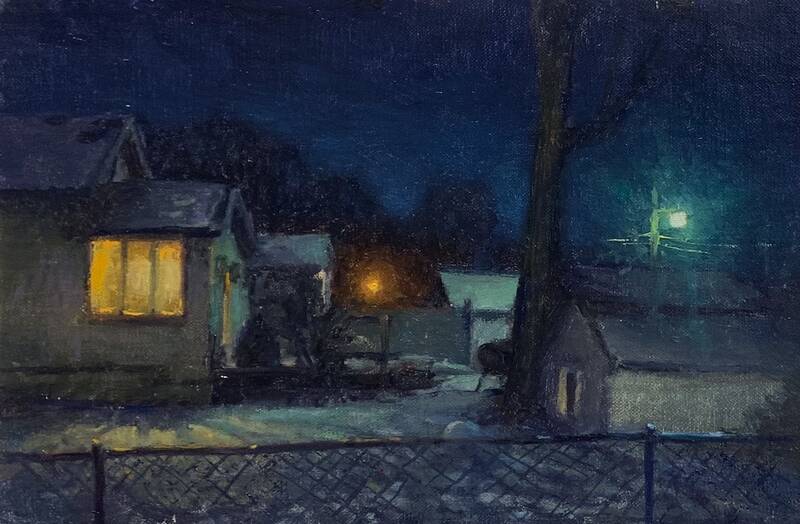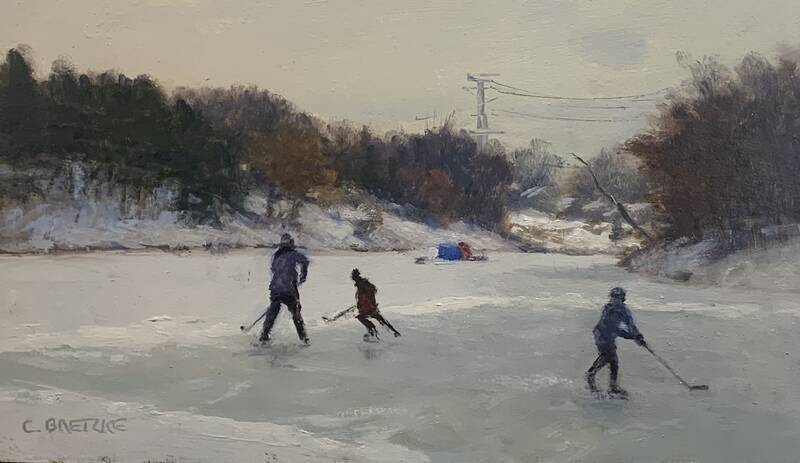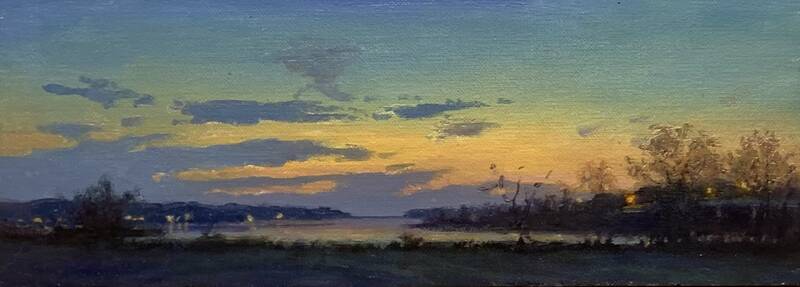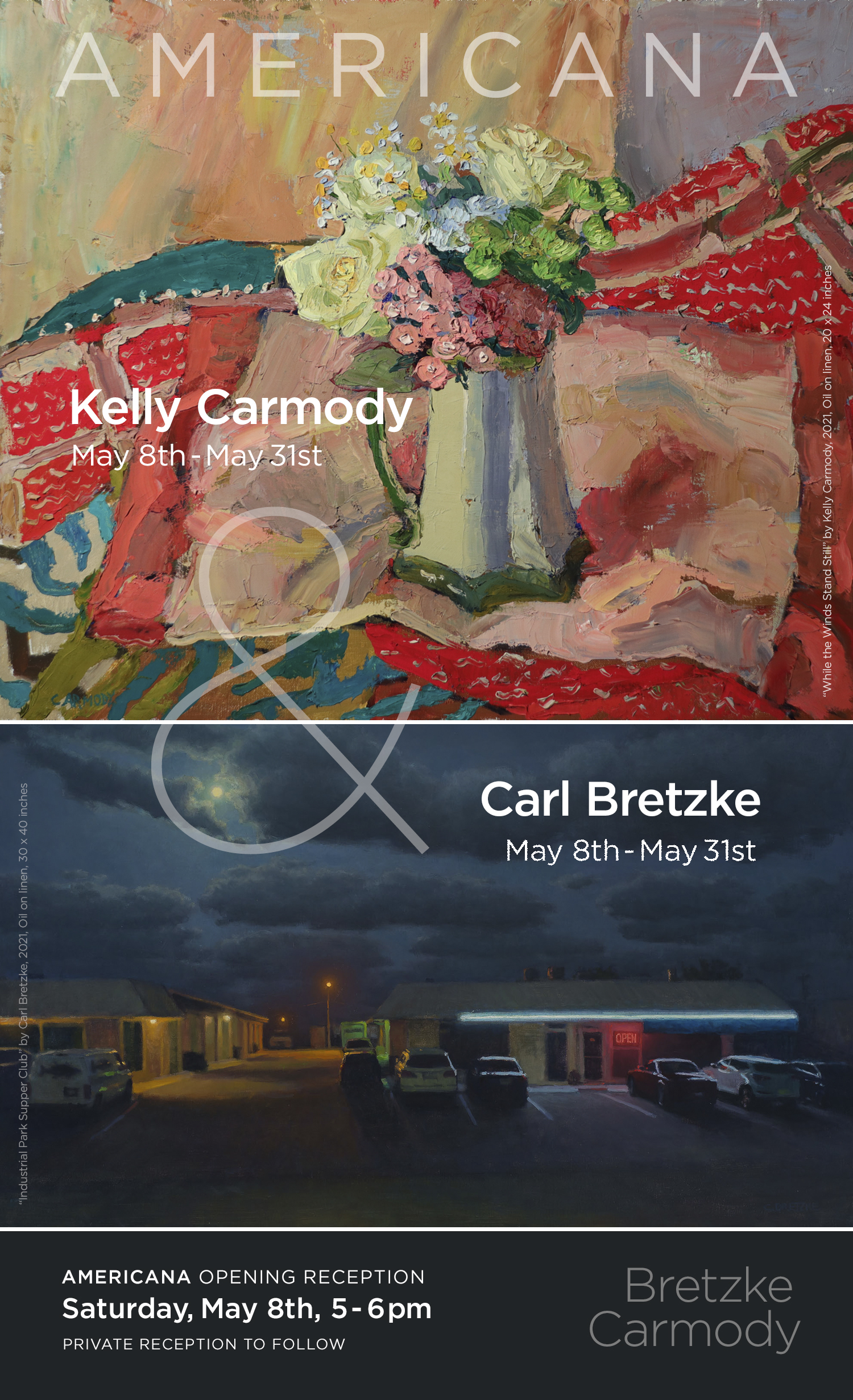
Grenning Gallery is pleased to present "Americana", an exhibition highlighting artists Carl Bretzke and Kelly Carmody at our space at 26 Main Street. The exhibit will hang through May 31st.
There is no denying the unique charms and cultural phenomenon of America. The, at times, unnerving political sphere, the wistful traditions like hotdogs at ball games, the vast and varied topography, the consummately captivated consumer culture, and the straightforward step of everyday life contributed to the construction of the legacy and lore of the American spirit.
"Americana" refers to the cultural heritage and identity of America. This concept is rooted in the nostalgic small-town way of living ("the good old days") which represents an adherence to a value system that some would argue has been lost. Musicians ( Bob Dylan, Johnny Cash, and Bruce Springsteen), fashion brands ( Levi's and Converse), and of course artists ( Georgia O'Keefe, Andy Warhol, James Whistler, Norman Rockwell, Jasper Johns) have all in their own rite, expressed and preserved the cultural artifacts of American history. What is more American than driving down Route 66 wearing a beat-up pair of Levi's listening to Johnny Cash wail on the radio and hanging from the rear-view mirror a chintzy replica of Grant Wood's "American Gothic"?
The field of visual arts is a particularly powerful realm because the artist is able to construct their own personal version of a scene or moment. Ultimately, the feelings that the painter had surrounding their subject is translated into a spirit or energy that is communicated upon the viewer. Paintings are like a visual diary of their American experience with a beating heart.
This exhibition will explore two American artists, Carl Bretzke and Kelly Carmody, whose careers have been filtered through an American lens and whose works, though imbued with European traditions and processes, communicate a distinctly American experience.
Carl Bretzke (b. 1954), born in Minnesota, is a representational painter and an accurate and observant chronicler of urban and plein-air scenes. Having been trained and employed in the medical field for 30 years before becoming a full-time painter, Bretzke reflects : " In medicine, you see what you know. In painting, you paint what you see. You have to know it, to see it, to paint it."
Bretzke is most comfortable painting the Mid-West scenes he intimately knows. His work explores the prismatic palette, and he is constantly concerned with the effect of light (perhaps an upshot of his scientific background.) Bretzke's paintings perform tricks for the eye as he explores the subtle shifts of light within the composition.
He is particularly adept at scenes which ooze in darkness, reminiscent of Edward Hopper. Bretzke remarks: "What most people don't notice is as the light drops off, the color of light changes. You have to see WHERE the color changes and where the light is coming from."
Bretzke's work also exudes a cinematic quality that evokes a more positive and connected iteration of Edward Hopper's deep dive into the American experience. Almost a 100 years later, where Hopper saw angst, Bretzke finds peace. Where Hopper found isolation, Bretzke finds comfort. Bretzke uses the moon light, the neon lights and the flood lights of an empty hotel the way a conductor would modulate the wood winds to bring about a coordinated soothing melody. Whether he is painting the Pacific Highway, the woods "Up north" in Minnesota, or the streets of Sag Harbor, Bretzke's work is definitely home-grown as he taps into his updated yet timeless look at Americana.
Kelly Carmody (b. 1977), a native of Massachusetts and summer resident of Shelter Island, is a gifted and dedicated American artist on a profound path. This show marks a pivotal point in her career. The energy vibrating atop her canvases announces she is onto something significant.
Carmody's work has undergone a major shift. This classically trained painter who was best known for her meticulously painted figurative works has traded in her paint brush for a palette knife. The result is thick and luscious paintings rich in color and deft in composition. This deliberate decision came after she re-read "Hawthorne on Painting" by Charles Webster Hawthorne. Hawthorne often read and quoted by painterly illuminati, states: "Don't paint with a brush, use a lot of paint with something like a palette knife without a pointed end." The palette knife is a clumsier tool, yet it forced Carmody to work less delicately resulting in incredibly successful works with palatable spirit and energy. She agrees: " There is a spirit of joy and connectivity in this series. I am able to see bigger concepts on the canvas than the object itself." Taking conscious cues from painters like Southampton's Fairfield Porter, or New England's Milton Avery, Carmody uses swaths of color to capture a scene without intently focusing solely on the details. She suggests that this series of paintings reads more like the figurative language of poetry than the straightforward storytelling of a novel. Therefore, it makes sense that the titles are derived from the poetry of her dear friend and fellow American painter, Shirley Pulido, who sadly passed away earlier this year.
Carmody attended Massachusetts College of Art and furthered her education at the Art Student League and in the studio of Numael Pulido. Her work, though rooted in European sensibilities, possesses a distinctly American feel.


